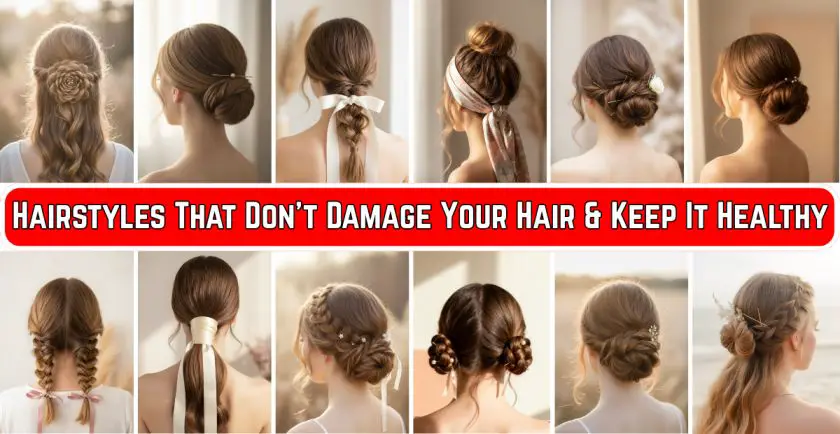What if your favorite hairstyle is secretly harming your hair? While many styling techniques promise glamour, they often leave strands weak, brittle, or prone to breakage. The truth is, even nighttime routines can sabotage your efforts—rough pillowcase friction and tight updos contribute to daily hair loss and long-term damage.
Research shows the average person loses 100 hairs daily, with nighttime friction playing a major role. Tight ponytails and braids can lead to traction alopecia, a condition caused by repeated tension on follicles. But here’s the good news: you don’t have to choose between style and hair health.
This guide reveals how to maintain vibrant locks without compromise. Discover styling methods that reduce stress on strands while keeping your look fresh. From loose twists to silk-friendly bedtime routines, you’ll learn practical solutions tailored to every texture and length. Ready to transform your approach to hair care?
Key Takeaways
- Protective styles minimize friction and breakage during sleep
- Tight ponytails increase risk of traction alopecia over time
- Nighttime routines impact hair strength as much as daytime styling
- Healthy styling doesn’t require sacrificing trendy looks
- Solutions vary for curly, straight, fine, or thick hair types
Understanding How Hairstyles Affect Hair Health
What your mirror doesn’t show: the toll of tight styling goes beyond split ends. Constant pulling creates micro-tears in hair shafts while restricting natural movement. This strain disrupts growth cycles and alters your scalp’s environment.
The Role of Tension and Friction
Tight ponytails exert up to 3.5 pounds of pressure on follicles – equivalent to hanging a 12-ounce soda can from each strand. Over time, this stress inflames hair roots, weakening their grip. Temple areas suffer most, with 68% of traction alopecia cases starting there.
Nightly friction acts as a silent contributor. Cotton pillowcases create drag forces that snap fragile strands. Combine this with daytime styling pressure, and hair endures 16+ hours of daily stress.
Impact on Hair Loss and Scalp Health
Restricted blood flow starves follicles of nutrients needed for growth. A stressed scalp produces more sebum, clogging pores and creating breeding grounds for inflammation. Early signs include:
- Itchy or tender areas after removing styles
- Short “baby hairs” breaking at the hairline
- Visible scalp patches where tension was highest
Left unaddressed, chronic strain pushes follicles into permanent dormancy. This reduces density by 40% in affected zones within two years, according to trichology studies.
Hairstyles That Don’t Damage Your Hair: Top Low-Tension Options
Finding the perfect balance between polished looks and hair integrity begins with strategic styling. These approaches reduce strain while keeping strands secure and camera-ready.
Low Braids, Ponytails, and Semi-Collected Styles
These easy, low-tension hairstyles keep your hair polished without pulling on delicate roots. They minimize breakage, improve comfort, and still look stylish enough for any occasion.
1️⃣ Low Ponytail at the Nape
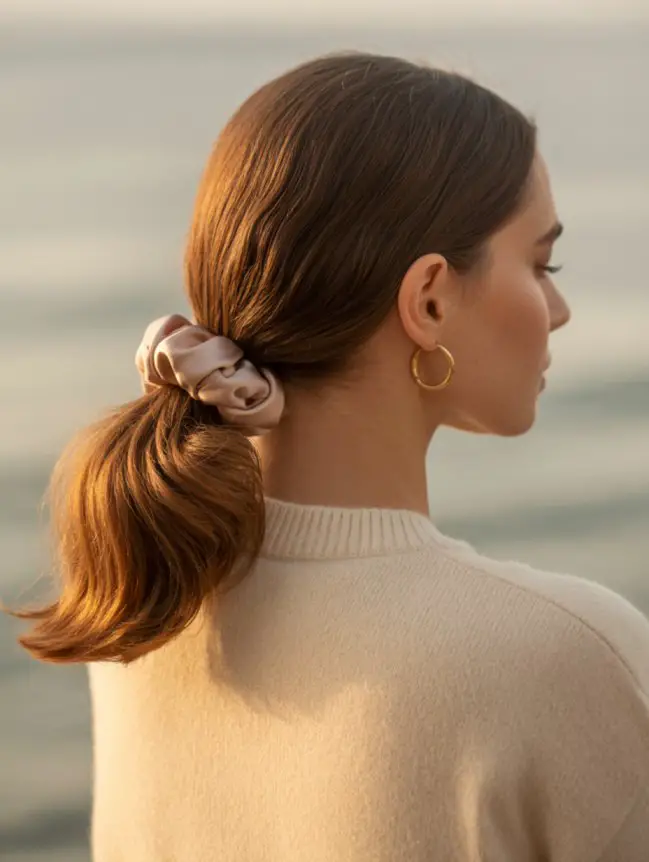
- Why it works: Gravity does most of the holding, not tension.
- How to do it: Gather your hair gently at the base of your neck and secure it with a satin or silk scrunchie. Avoid wrapping too tightly—two loops are usually enough.
- Benefits: Reduces scalp tension, prevents hairline breakage, and keeps hair smooth even under hats or scarves. Perfect for daily wear or workdays.
2️⃣ Loose Side Braid


- Why it works: A relaxed side braid balances weight and avoids tugging at the crown.
- How to do it: Sweep your hair to one side, loosely braid from mid-length downwards, and tie the end with a soft ribbon or fabric band.
- Benefits: Prevents friction on pillowcases, keeps long hair manageable, and maintains waves when undone. Works well for thick or textured hair.
3️⃣ Half-Up Claw-Clip Style
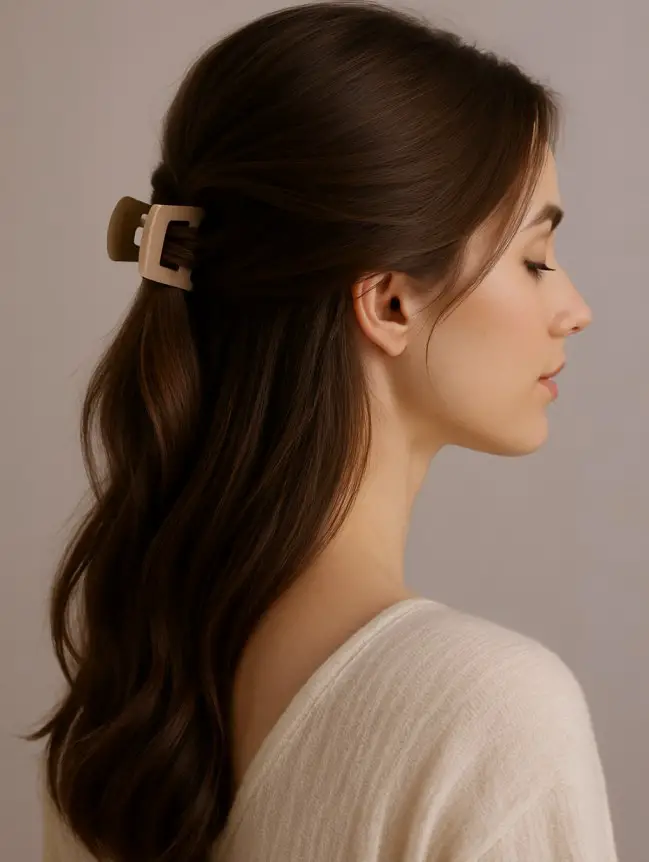
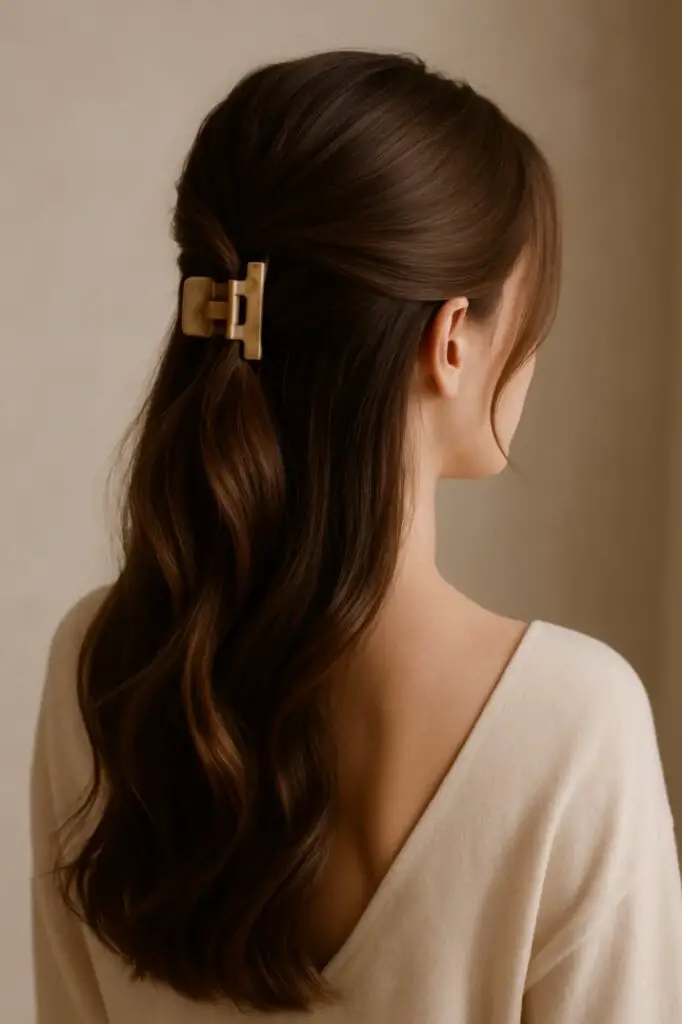
- Why it works: Only part of your hair is secured, leaving most of it tension-free.
- How to do it: Section off the front or crown portion, twist lightly, and clip with a large claw clip in the middle of your head.
- Benefits: Keeps hair off your face without pulling roots, prevents scalp soreness, and gives a casual yet chic look.
4️⃣ Loose Twist or Rope Braid Bun
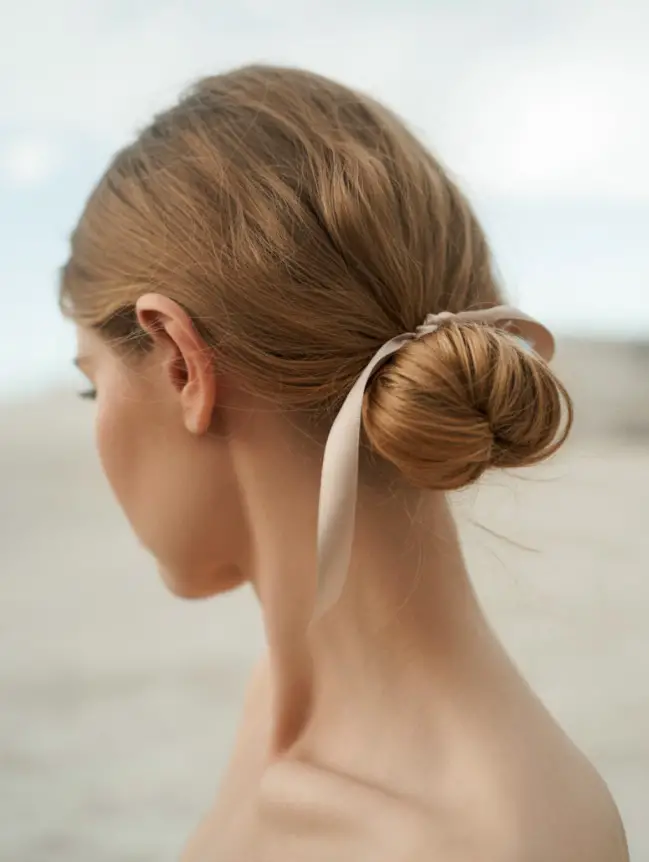
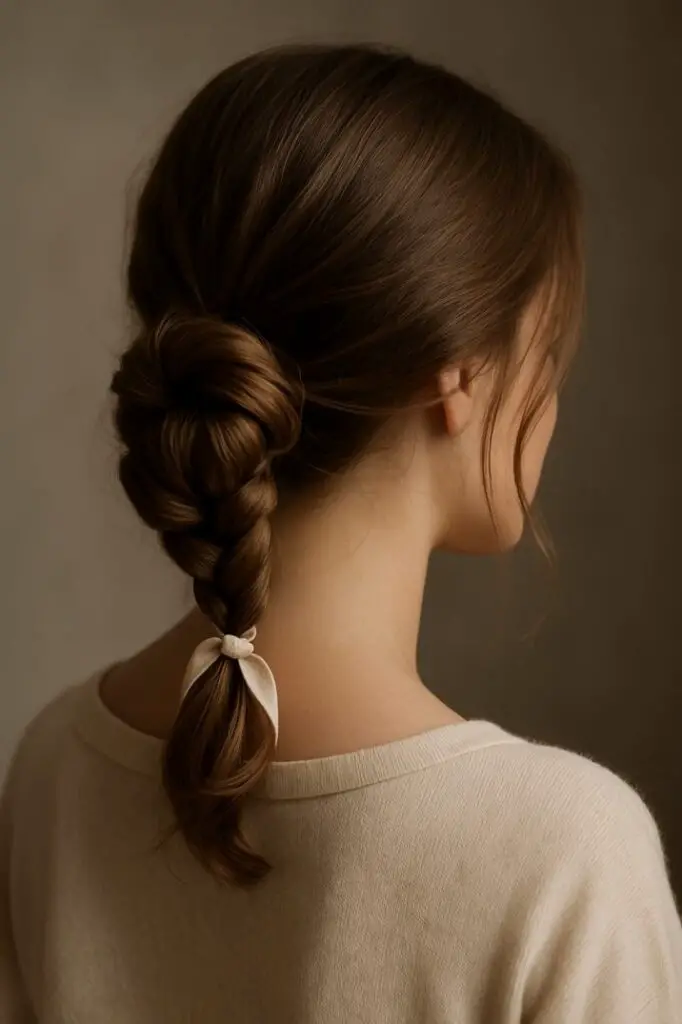
- Why it works: Twisting instead of tightly wrapping distributes pressure evenly across strands.
- How to do it: Gently twist sections of hair into a soft bun at the back of your head and secure with bobby pins or a silk ribbon.
- Benefits: Prevents tangling, reduces breakage at ends, and maintains moisture during the day.
5️⃣ Low Bubble Ponytail
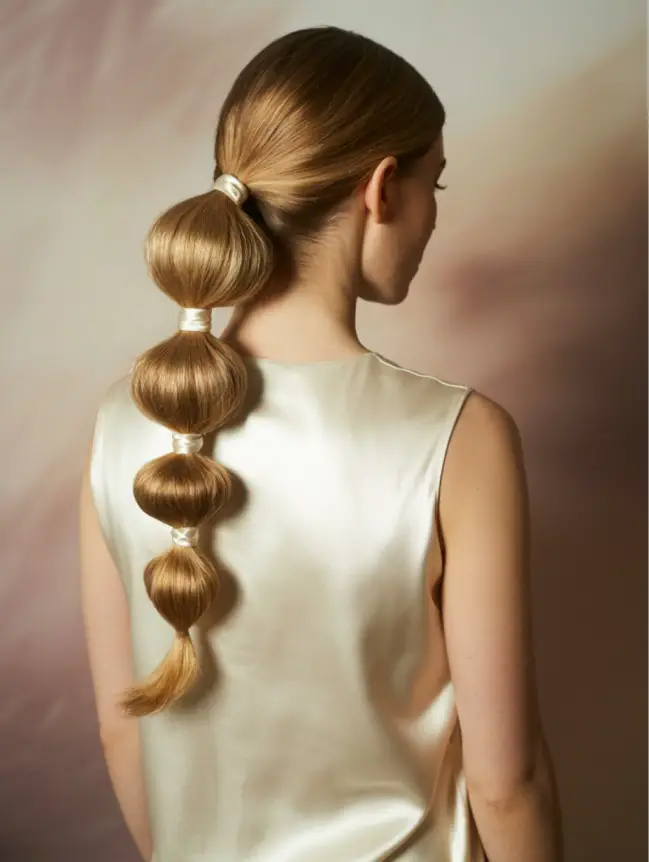
- Why it works: Uses multiple loose sections instead of one tight tie.
- How to do it: After making a low ponytail, add satin ties every few inches down the length. Slightly tug between sections to create “bubbles.”
- Benefits: Avoids continuous pulling, looks trendy, and protects fragile strands from snapping.
6️⃣ Loose Braided Crown or Headband Braid



- Why it works: Shifts pressure away from the scalp’s most sensitive points.
- How to do it: Take a small section near your ear, braid it loosely, and pin it across your head like a crown.
- Benefits: Adds soft volume and keeps front hair tidy without needing tight elastics or sprays.
7️⃣ Low Messy Twist with Ribbon Tie
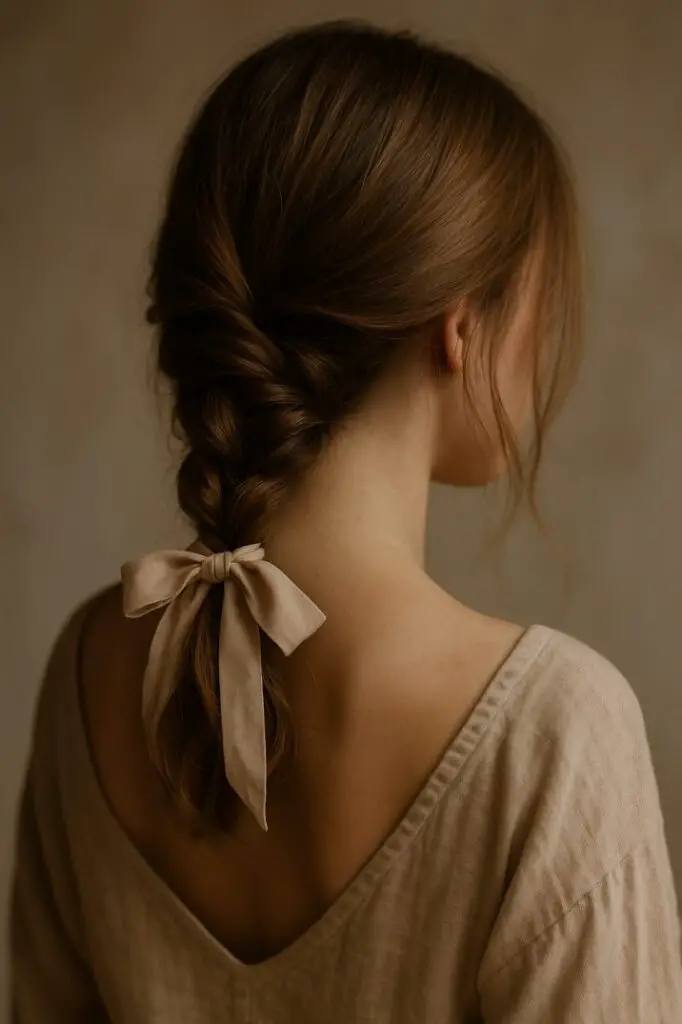
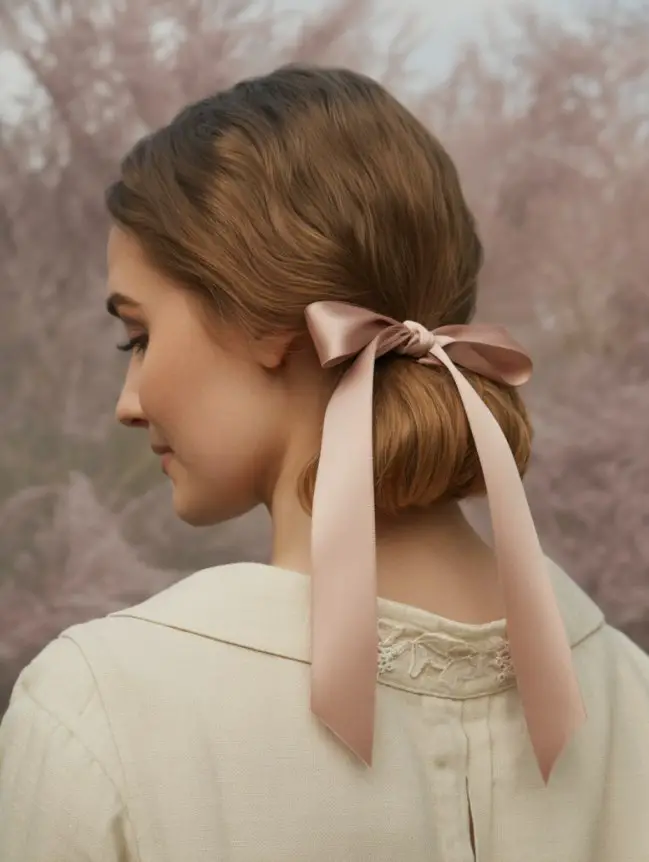
- Why it works: Fabric ties distribute weight gently instead of constricting hair.
- How to do it: Twist your hair loosely into a knot or roll and secure with a ribbon rather than a rubber band.
- Benefits: Perfect for date nights or casual outings — adds a romantic touch while keeping hair stress-free.
8️⃣ Loose Braided Pigtails


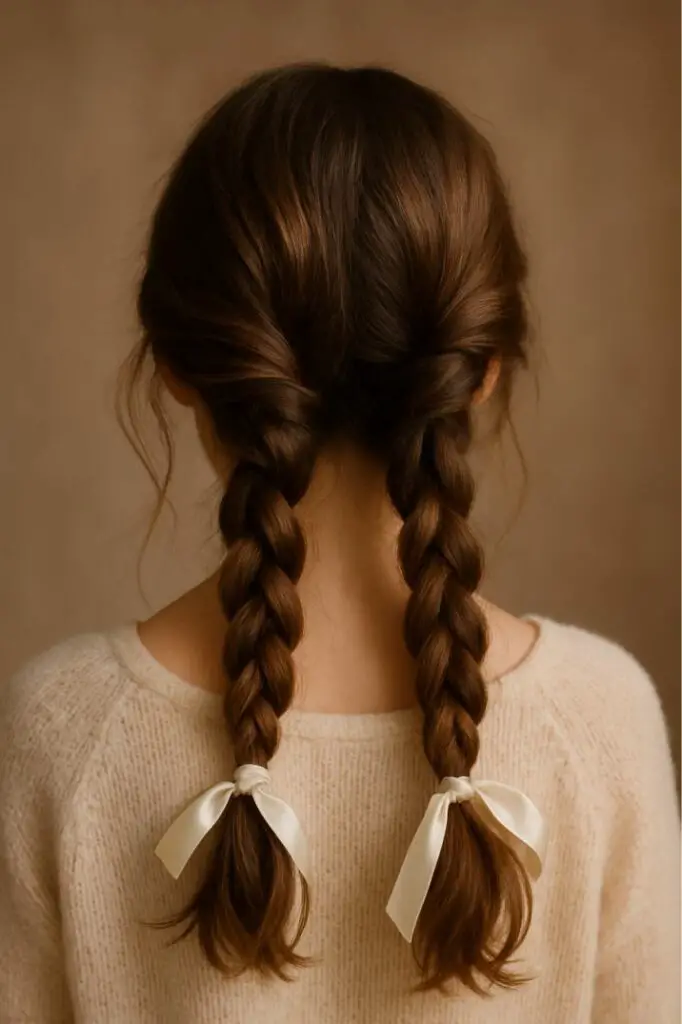
- Why it works: Two separate braids share the load evenly across the scalp.
- How to do it: Divide hair into two equal parts and braid loosely down each side.
- Benefits: Reduces tension at the crown, prevents tangling during sleep, and keeps hair neatly contained.
9️⃣ Low Loop Ponytail
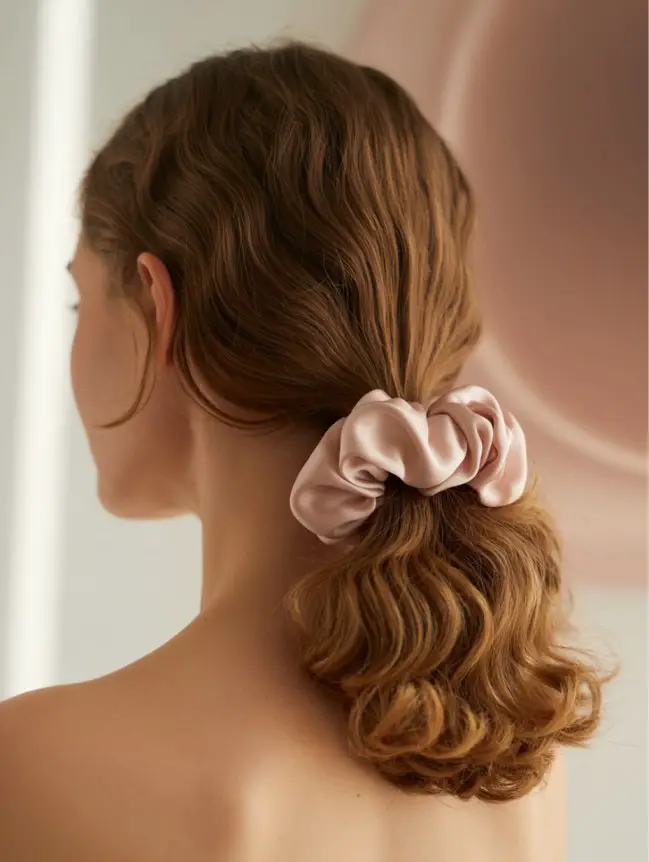
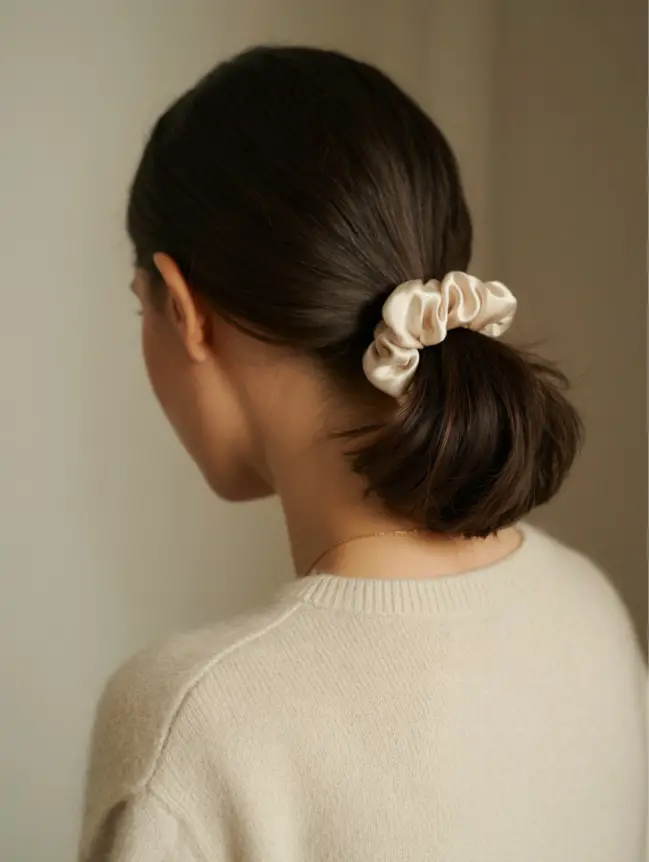
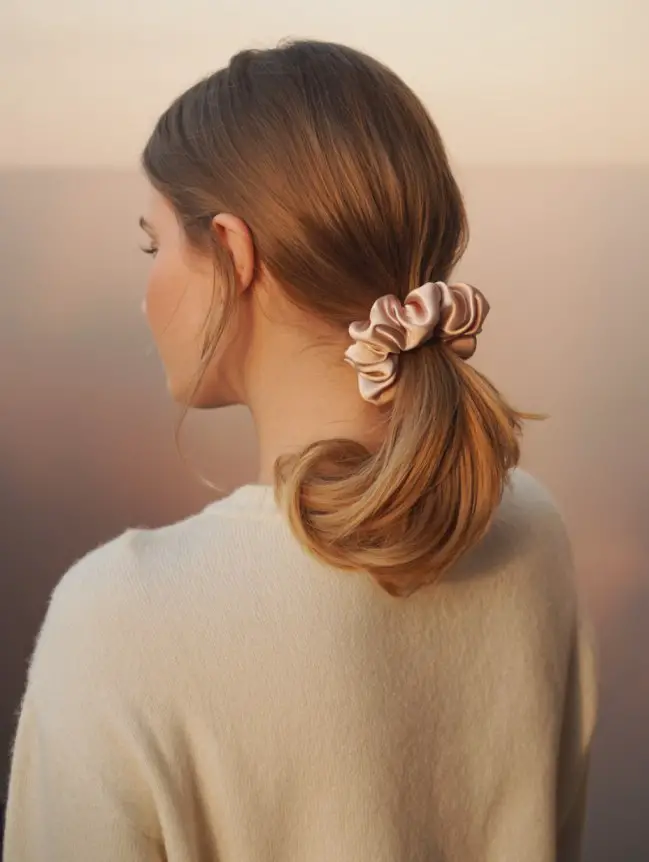
- Why it works: The loop distributes weight evenly and avoids tight knots.
- How to do it: Gather hair into a low ponytail and pull it halfway through the scrunchie to form a loop instead of a full pull-through.
- Benefits: Prevents pressure at the base, keeps ends protected, and looks effortlessly chic for errands or work.
🔟 Loose Braided Bun
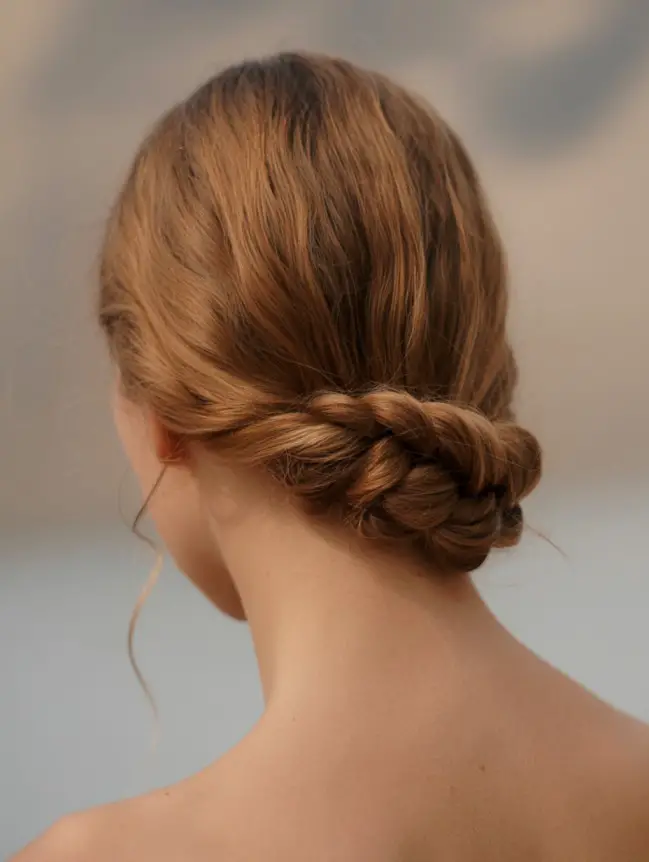
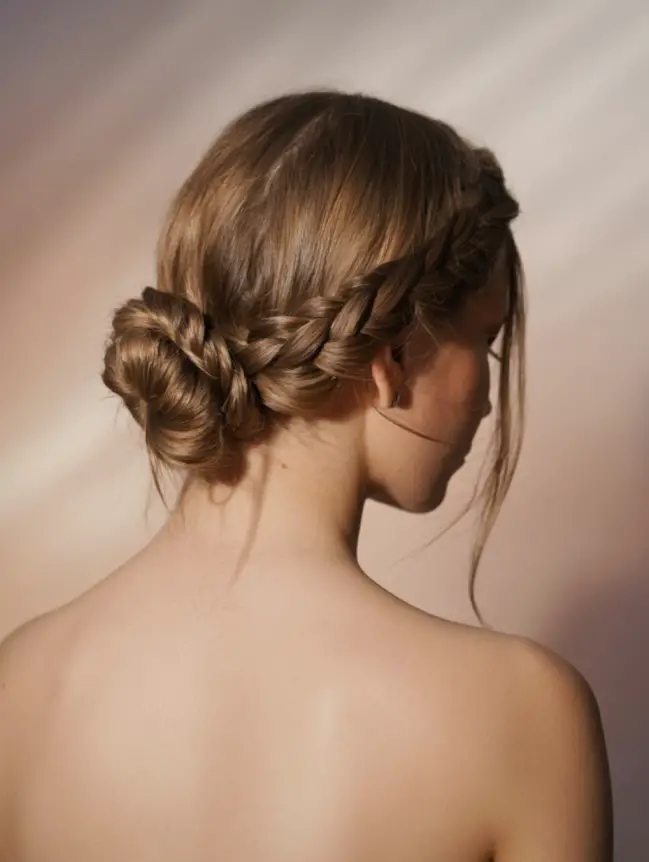
- Why it works: Combines the gentleness of braids with the security of a bun.
- How to do it: Create a single loose braid and coil it softly into a bun at the nape; pin with a few clips instead of elastics.
- Benefits: Minimizes friction, keeps ends tucked away, and works well for humid or windy days.
11️⃣ Half-Up Ribbon Tie
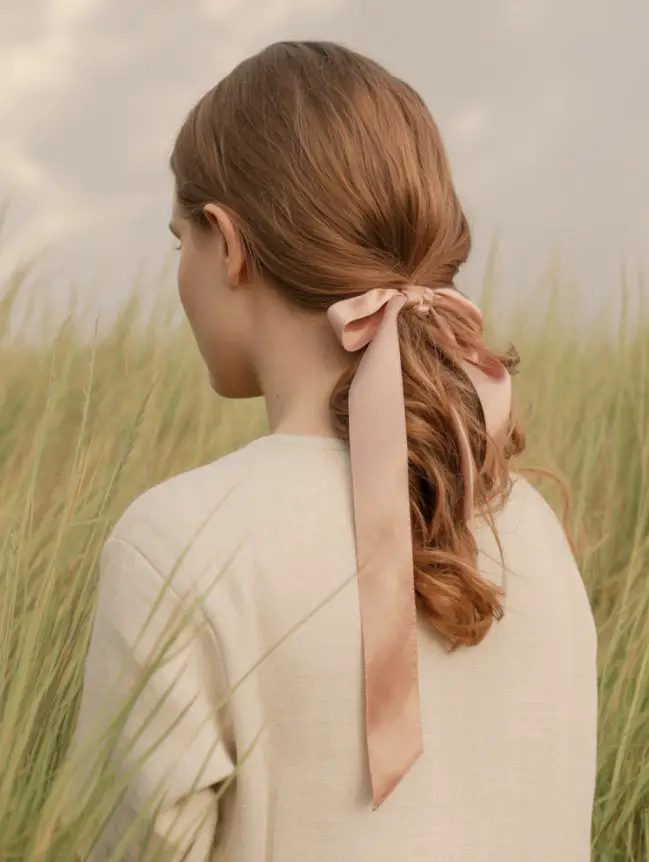
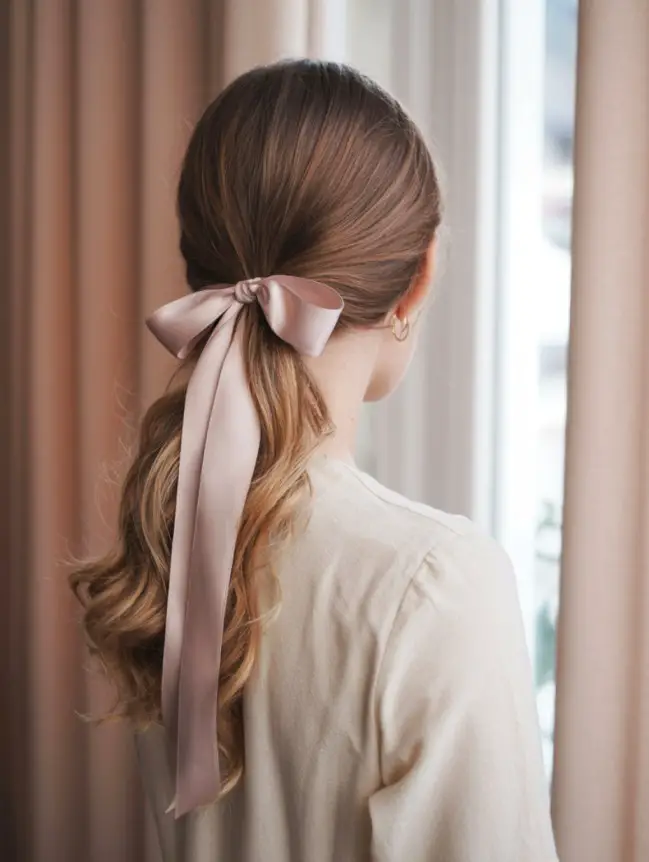
- Why it works: Ties only a small portion of hair, allowing scalp rest.
- How to do it: Pull back just the top section of your hair and tie it with a fabric ribbon or scarf.
- Benefits: Lightweight, feminine, and protects fragile crown areas from constant pulling.
12️⃣ Loose Twisted Side Bun
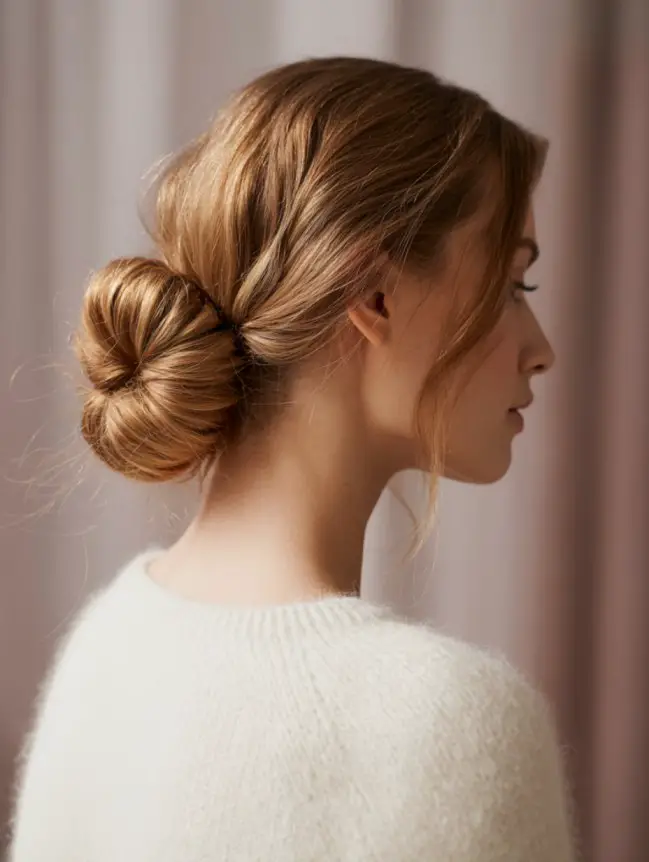
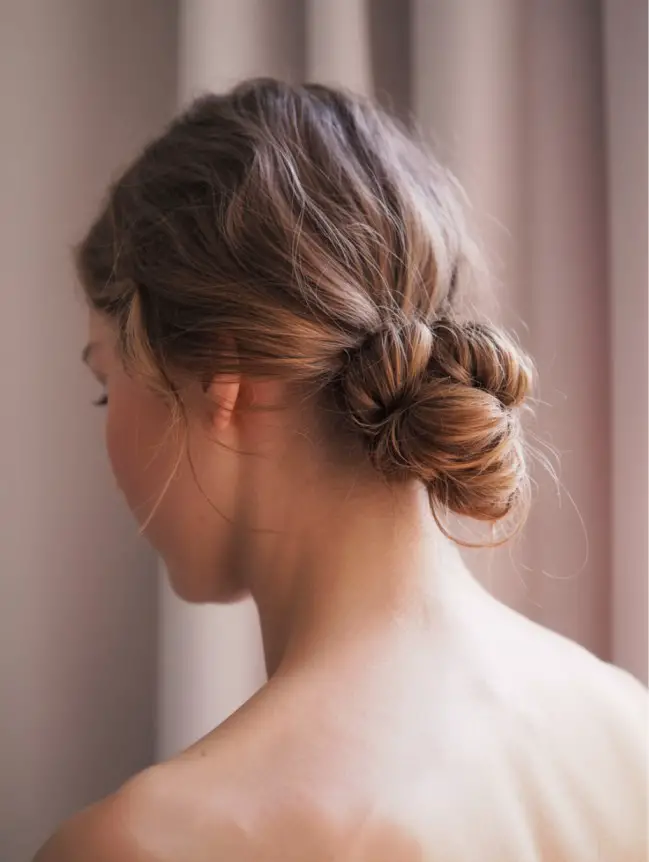
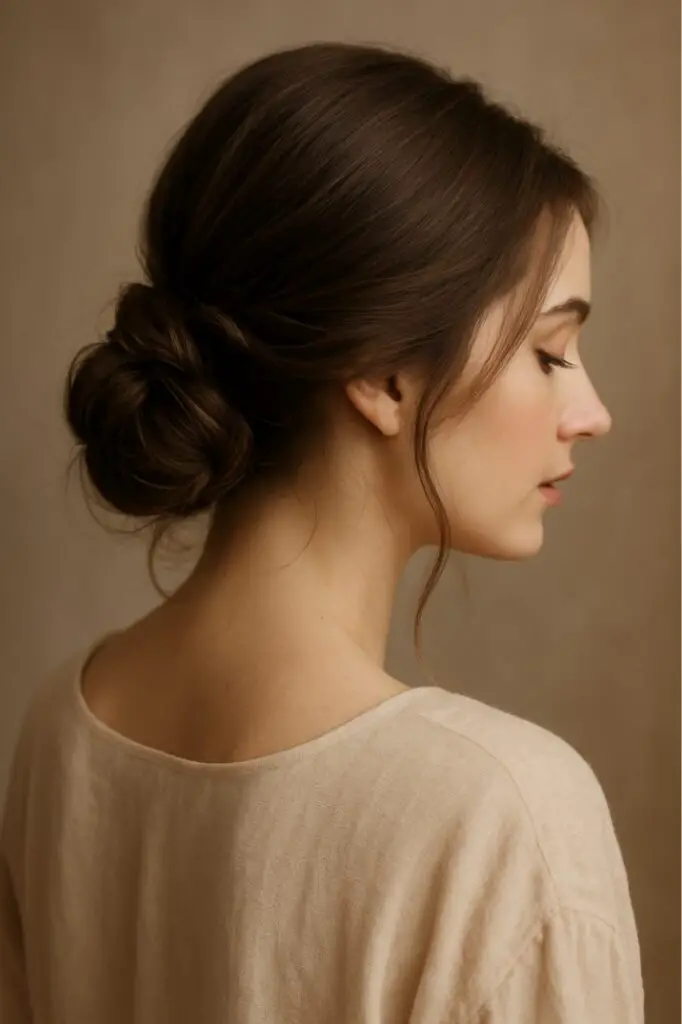
- Why it works: Twisting avoids mechanical strain from elastics or pins.
- How to do it: Twist your hair to one side and roll it loosely into a bun near the shoulder; secure gently with a few clips.
- Benefits: Ideal for fine hair, prevents stress on temples, and pairs well with silk accessories.
13️⃣ Low Ponytail with Scarf Wrap
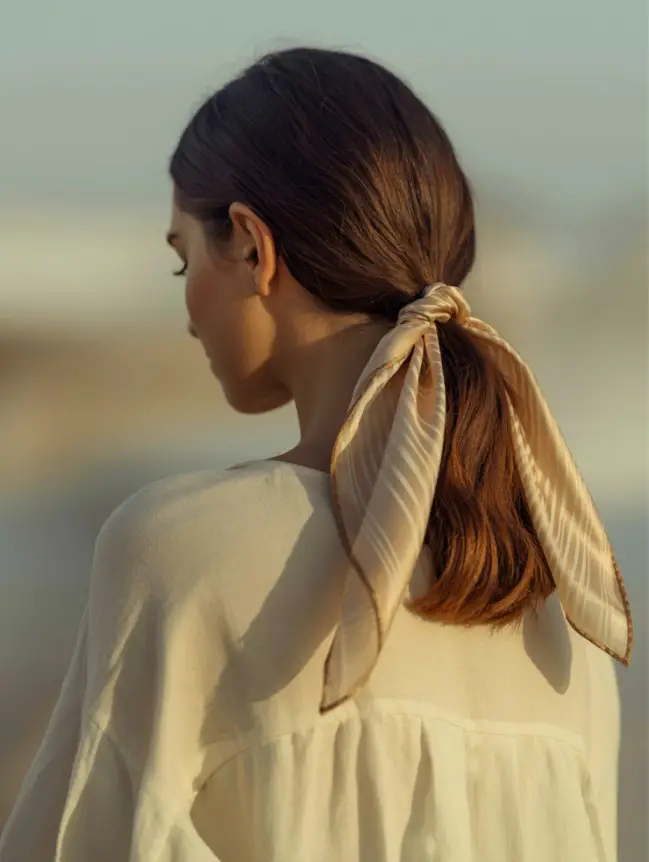
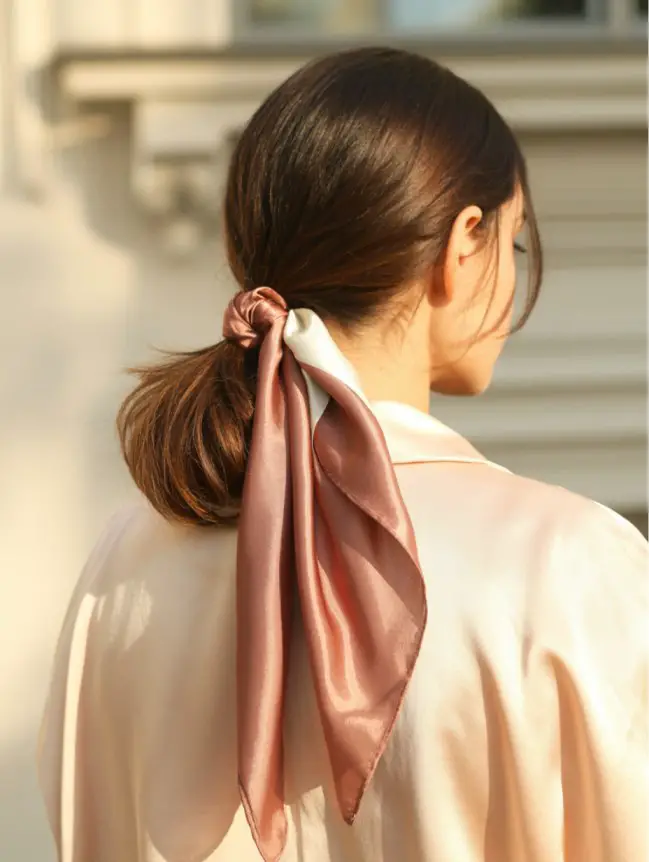
- Why it works: The scarf provides a soft cushion around strands.
- How to do it: Tie your hair into a low ponytail, then wrap a thin silk scarf around the base and let the ends hang.
- Benefits: Reduces friction, adds a stylish touch, and prevents creases or dents from tight hair ties.
14️⃣ Loose Twisted Half Pony
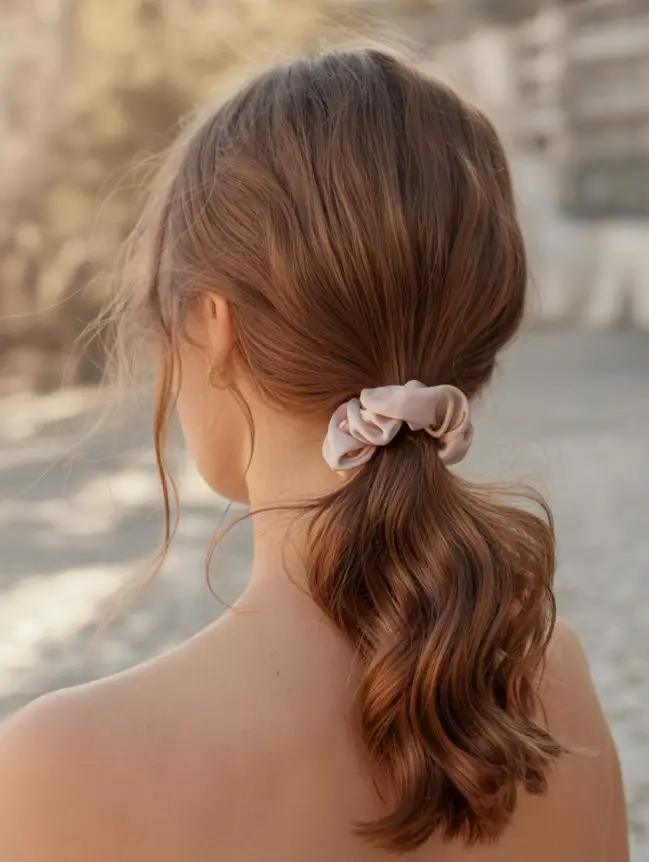
- Why it works: Allows flexibility at roots while keeping front hair neat.
- How to do it: Take two small sections from both sides of your face, twist them toward the back, and secure them together with a clip or scrunchie.
- Benefits: Perfect for medium to long hair; keeps volume at the crown without pulling.
15️⃣ Mini Low Braids on Each Side
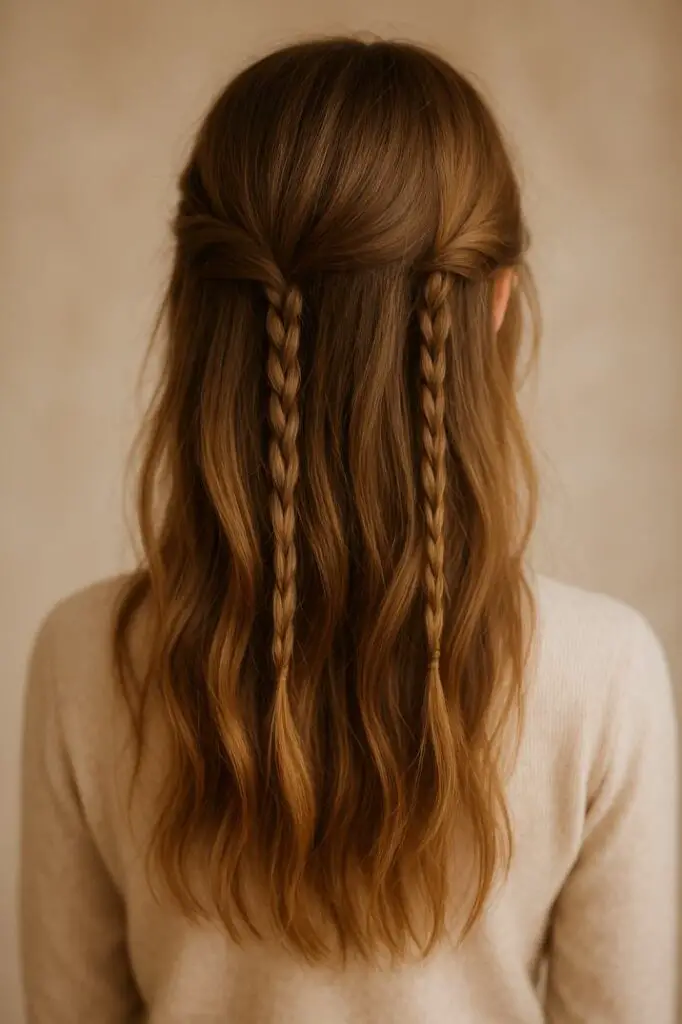
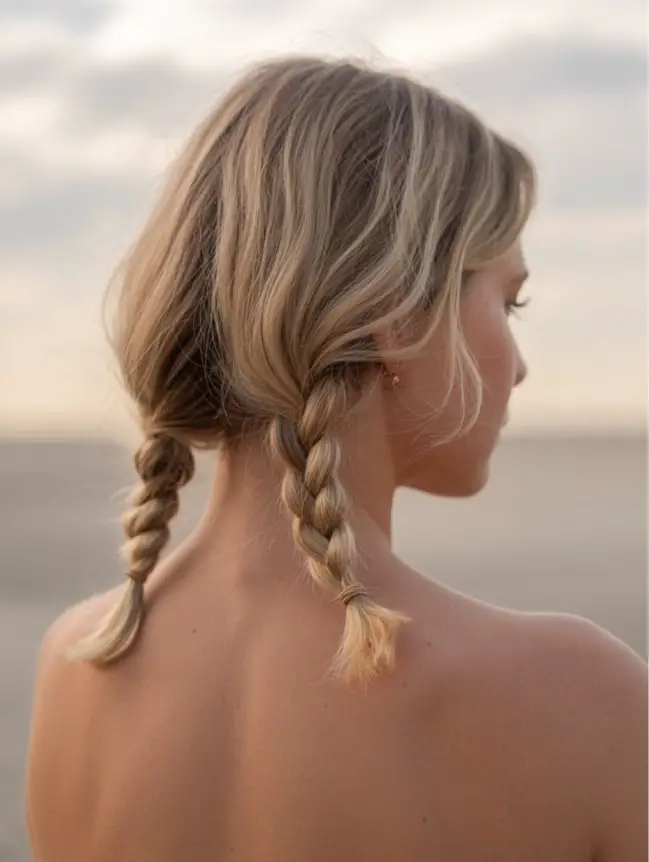
- Why it works: Keeps small flyaways managed without full tension.
- How to do it: Create thin, loose braids on both sides of your face and tie with soft rubber or fabric ends.
- Benefits: Adds boho charm, great for casual looks, and helps train new baby hairs gently.
16️⃣ Soft Rolled Ponytail
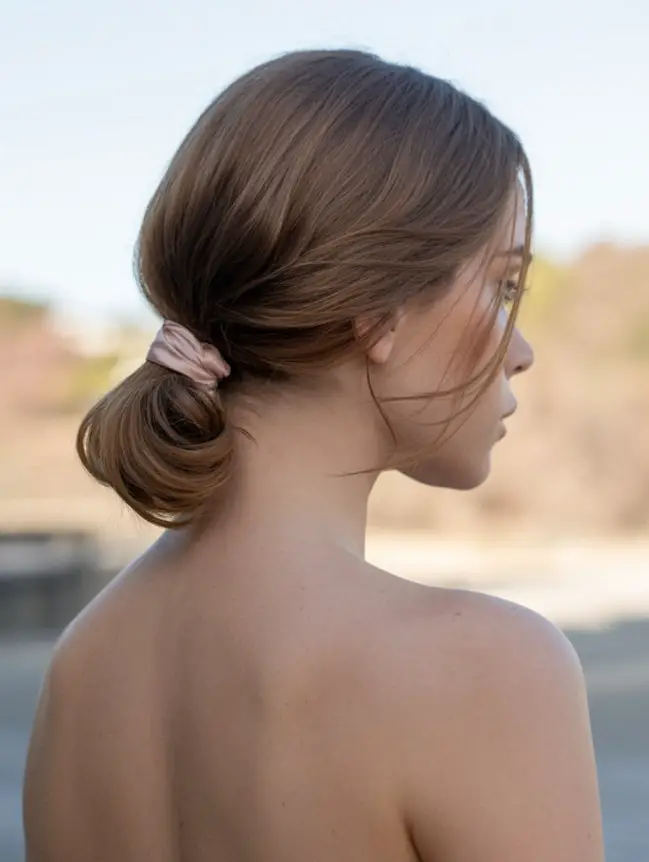
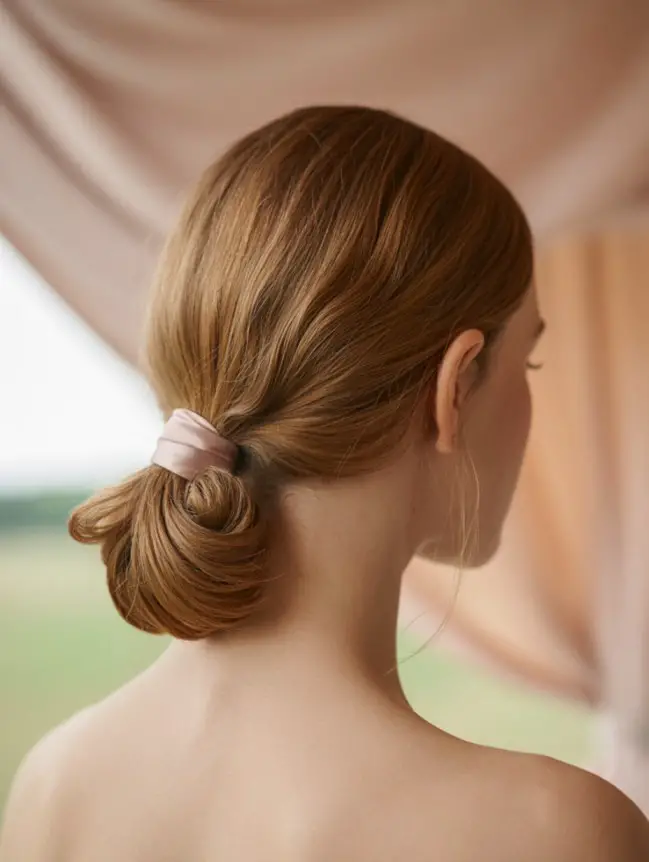
- Why it works: Protects hair ends from rubbing against collars.
- How to do it: Make a low ponytail, create a small opening above the tie, and roll your ponytail upward through it once.
- Benefits: Creates volume, avoids harsh tension, and gives a classy, polished finish.
17️⃣ Loose Twisted Crown Half-Up
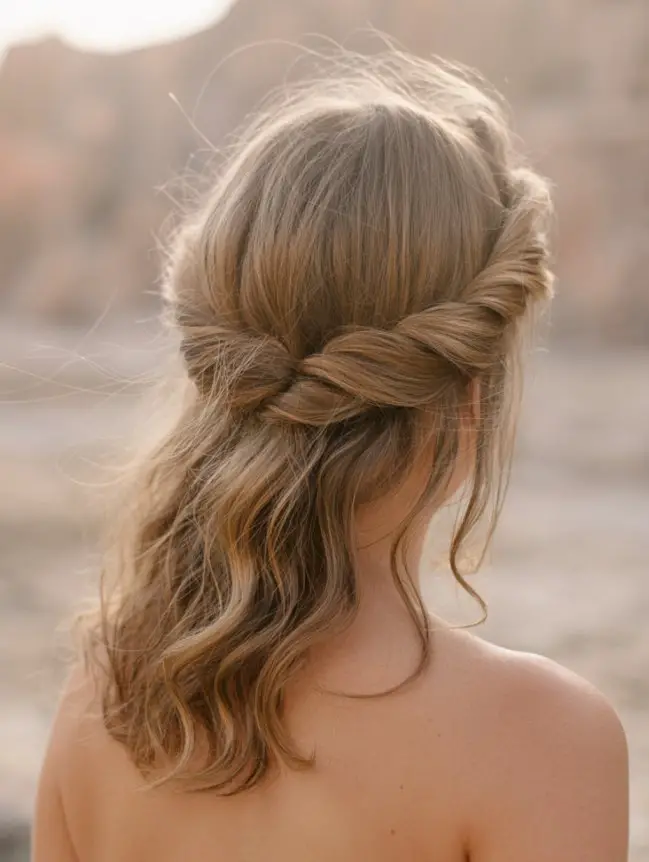
- Why it works: Keeps front hair lifted without stress on the roots.
- How to do it: Twist sections from above each ear toward the back, crossing them like a crown; secure with hidden pins or a barrette.
- Benefits: Ideal for parties or weddings—looks regal while being gentle on strands.
18️⃣ Loose Claw Clip Bun
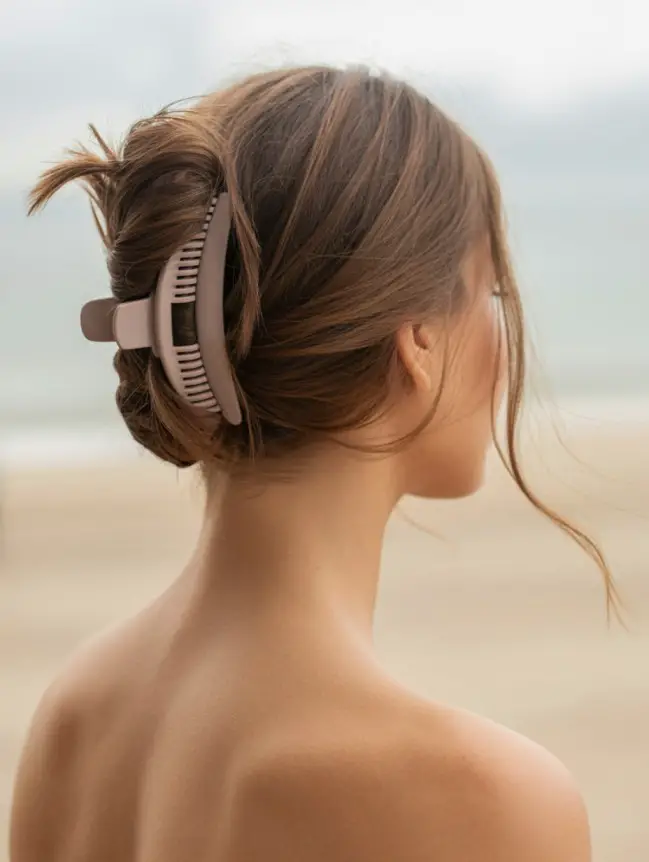
- Why it works: Claw clips hold hair softly without elastic strain.
- How to do it: Gather hair at the nape, twist lightly upward, and secure with a large claw clip; let ends fan out.
- Benefits: Reduces scalp tension, avoids breakage, and can be adjusted easily throughout the day.
19️⃣ Low Twisted Ponytail
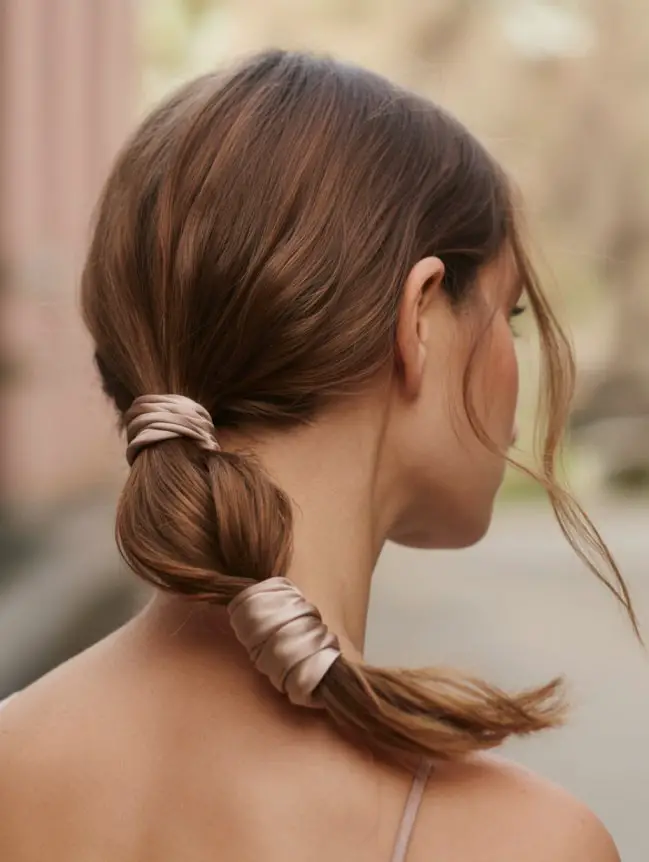
- Why it works: A simple twist transforms basic ponytails into gentle styles.
- How to do it: Divide your low ponytail into two sections, twist each, then wrap them together before tying loosely.
- Benefits: Elegant yet comfortable, keeps hair aligned and less frizzy.
20️⃣ Loose Braided Half-Up Bun
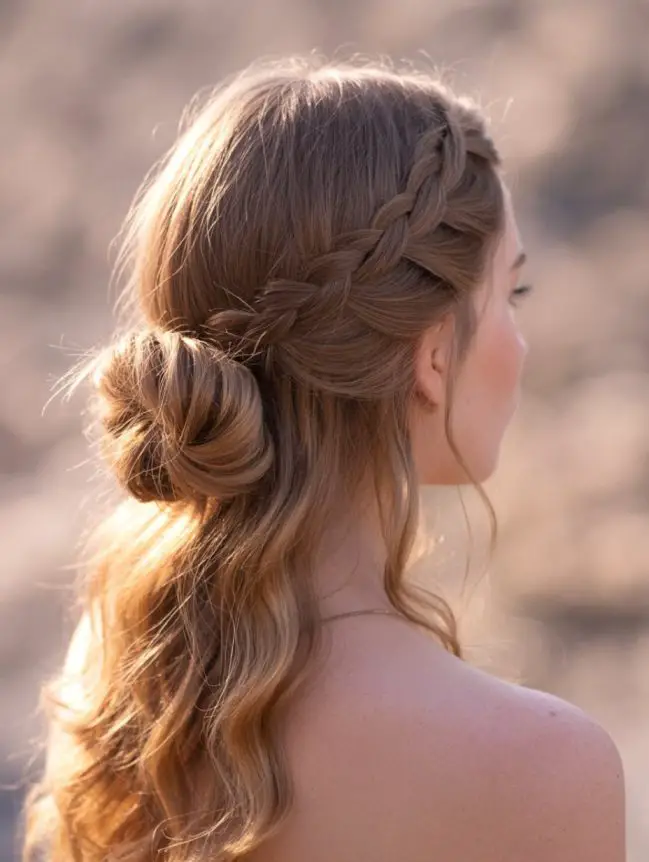
- Why it works: Splits tension between crown and lower hair.
- How to do it: Braid a small section from the crown and twist it into a soft bun, leaving the rest of your hair down.
- Benefits: Lightweight, adds volume, and protects top sections that usually face the most strain.
Using Accessories Like Headbands and Barrettes
Wide headbands tame flyaways better than elastic ties. Look for silicone grips that stay put without squeezing temples. They’re ideal for workouts or humid days.
Decorative clips add flair while serving practical purposes. Place them where you’d normally pull hair back tightly. Bonus: they double as quick fixes for grown-out bangs.
Ribbon wraps offer a chic alternative to traditional ponytail holders. Tie them around loose braids or low buns for gentle hold. The fabric distributes pressure evenly across strands.
Expert Tips for Styling Without Stressing Your Hair
Styling routines often hide unseen threats to your locks. The secret lies in smart product choices and adaptive techniques that work with your hair’s natural flow. Start by swapping harsh elastics for silk scrunchies – they reduce breakage by 40% compared to traditional ties. Pair these with flattering options for mature women that prioritize scalp comfort.
Choosing the Right Styling Products and Techniques
Lightweight styling creams outperform stiff gels. They tame frizz without suffocating strands. For hold, try flaxseed-based gels – they’re strong yet flexible. Apply products to damp hair using the “praying hands” method to coat ends evenly.
Air-drying trumps heat tools. If you must blow-dry, use a microfiber towel first. This cuts drying time by half while preventing cuticle damage. Twist sections loosely around your fingers instead of brushing wet hair.
Maintaining Hair Health Throughout the Day
Refresh your look without re-styling. Spritz a water-vinegar mix (1:4 ratio) to reactivate products. Use wide-tooth combs to smooth flyaways – they cause 60% less breakage than fine-tooth versions.
- Switch parting styles midday to redistribute tension
- Remove clips during lunch breaks for 30-minute recovery windows
- Massage scalp with jojoba oil before bedtime to boost circulation
Nighttime care matters most. Silk pillowcases slash friction damage by 78%, while loose pineapple buns preserve curls. Rotate between three protective styles weekly to prevent repetitive strain on the same hair sections.
At-Home Hair Treatments and Preventative Care
Your hair’s recovery phase happens while you sleep. Nighttime routines can either weaken strands or boost their resilience through smart protection. Discover methods that repair and strengthen while you rest.
Overnight Protection Techniques and Sleep Hairstyles
Loose styles prevent friction damage. Try a silk-wrapped bun at the crown – it keeps strands contained without pulling roots. For natural waves, braid damp hair in two loose plaits before bed.
Essential oils enhance these methods. Massage argan oil into ends before creating a low twisted bun. This combo locks in moisture and prevents split ends.
- Twisted rope braids for long hair reduce morning tangles
- Front top knots avoid pressure on delicate hairline strands
- Silk scarves protect colored hair from fading
DIY Hair Treatments to Boost Hair Strength
Your kitchen can double as your personal spa. These at-home masks and rinses restore shine, reduce breakage, and nourish roots — all without harsh chemicals.
1. Avocado & Coconut Milk Protein Mask
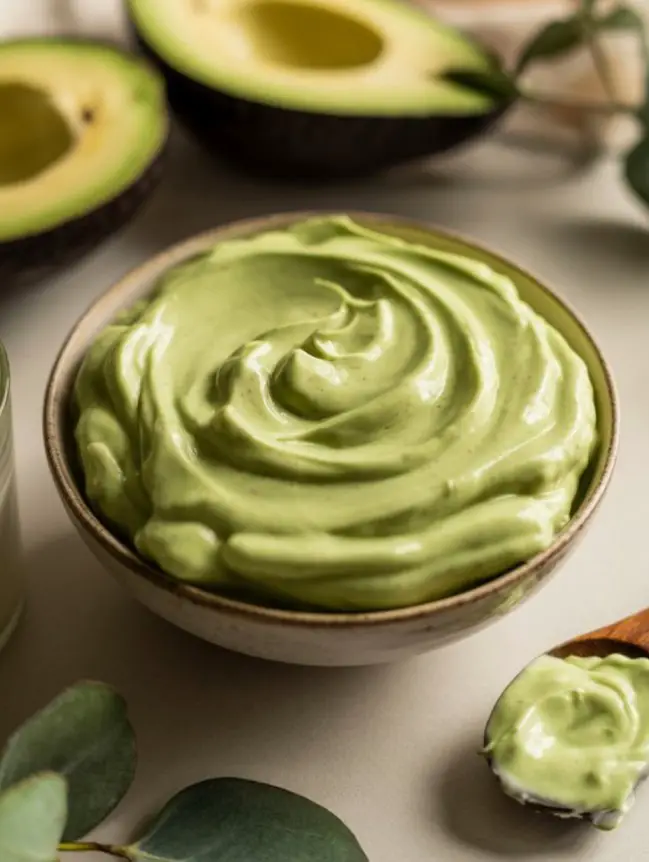
- Why it works: Avocado is rich in natural fats and biotin, while coconut milk provides lauric acid for repairing damaged strands.
- How to apply: Mash one ripe avocado with 4 tablespoons of coconut milk. Apply from roots to ends, cover with a shower cap, and leave on for 30 minutes. Rinse with mild shampoo.
- Benefits: Deeply hydrates, strengthens brittle ends, and adds a glossy finish.
2. Banana & Honey Moisture Mask
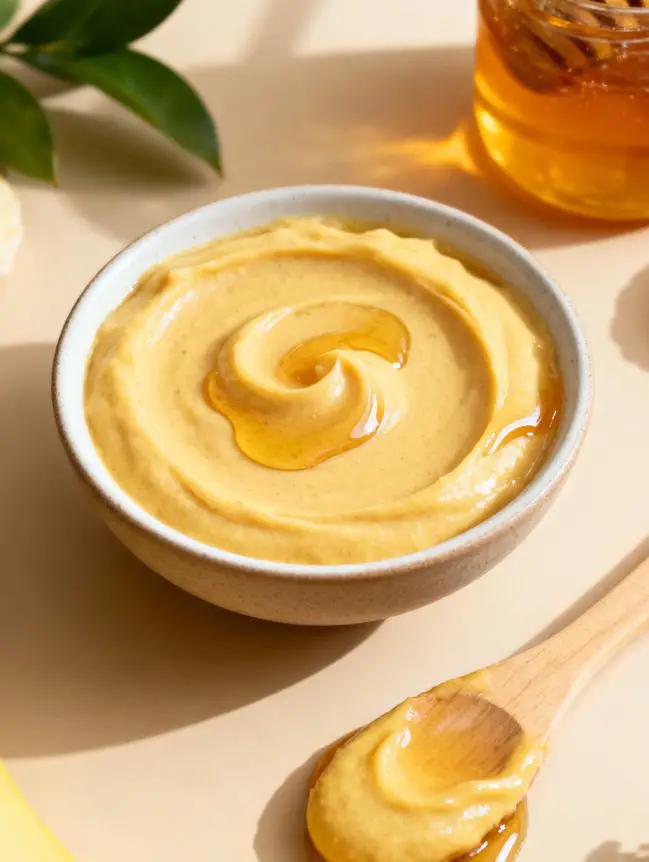
- Why it works: Bananas supply potassium and silica that boost elasticity; honey acts as a humectant to lock in moisture.
- How to apply: Blend one ripe banana with 2 tablespoons of honey. Apply evenly to damp hair and leave for 20–25 minutes before rinsing.
- Benefits: Reduces frizz, prevents split ends, and adds natural softness.
3. Aloe Vera & Castor Oil Growth Mask
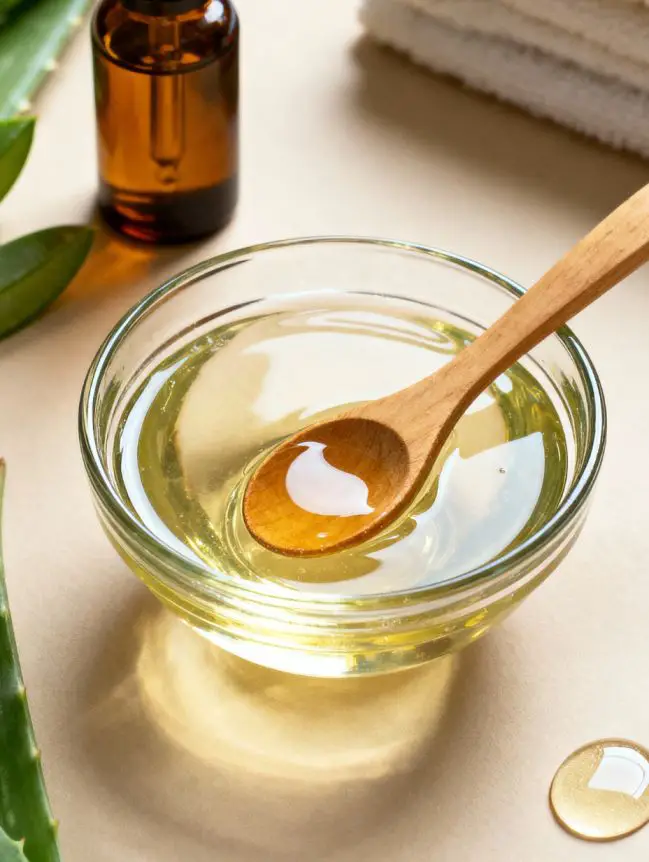
- Why it works: Aloe soothes the scalp while castor oil’s ricinoleic acid improves circulation to hair follicles.
- How to apply: Mix 3 tablespoons of aloe gel with 1 tablespoon of castor oil. Massage into the scalp and leave for 45 minutes.
- Benefits: Encourages new growth and strengthens roots.
5. Fenugreek (Methi) & Yogurt Strength Pack
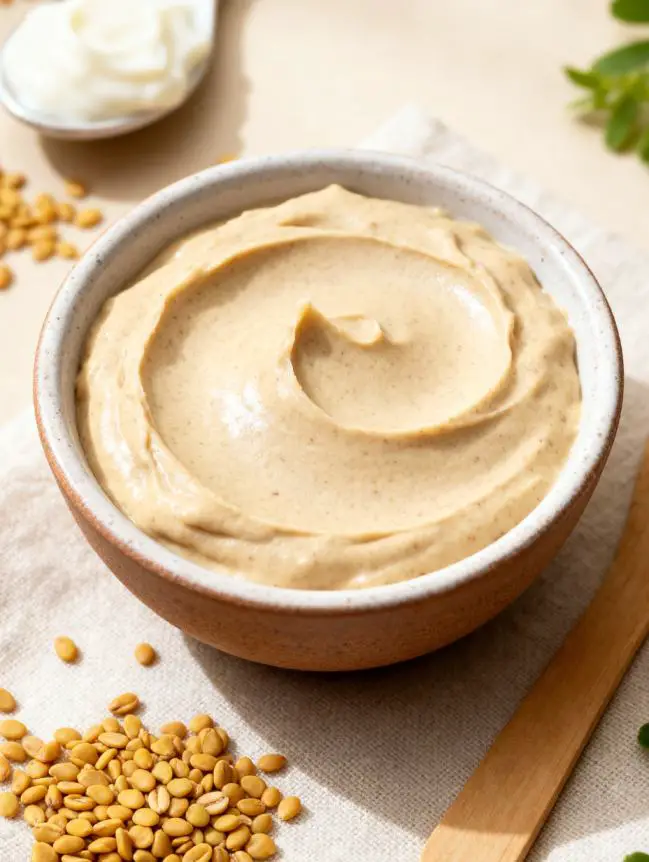
- Why it works: Fenugreek seeds are rich in nicotinic acid and proteins that combat thinning; yogurt adds lactic acid for gentle exfoliation.
- How to apply: Soak 2 tablespoons of fenugreek seeds overnight, grind them into a paste, and mix with 3 tablespoons of yogurt. Apply for 30 minutes and rinse.
- Benefits: Reduces dandruff, strengthens roots, and adds silky smoothness.
6. Green Tea & Rice Water Rinse
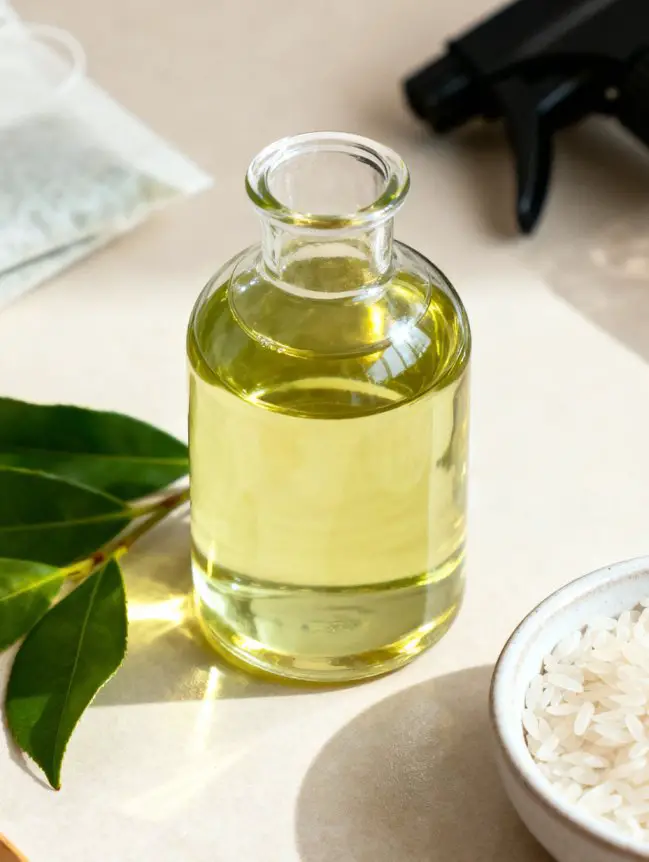
- Why it works: Green tea antioxidants reduce shedding, and rice water amino acids repair damaged cuticles.
- How to apply: Brew one cup of green tea, mix with ½ cup of fermented rice water, and use as a final rinse after shampooing.
- Benefits: Adds shine, reduces hair fall, and improves elasticity.
7. Coconut Oil & Vitamin E Overnight Treatment
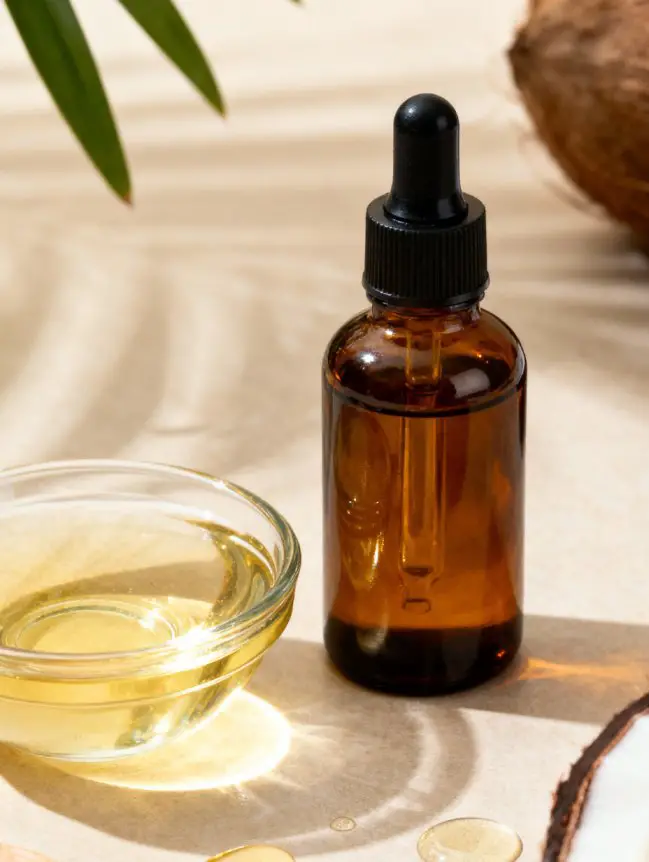
- Why it works: Coconut oil penetrates the cortex of the hair, while vitamin E neutralizes free radicals that cause breakage.
- How to apply: Mix 3 tablespoons of coconut oil with 2 capsules of vitamin E oil. Massage into scalp and leave overnight.
- Benefits: Deep conditioning and split-end prevention.
8. Rosemary & Jojoba Oil Growth Serum
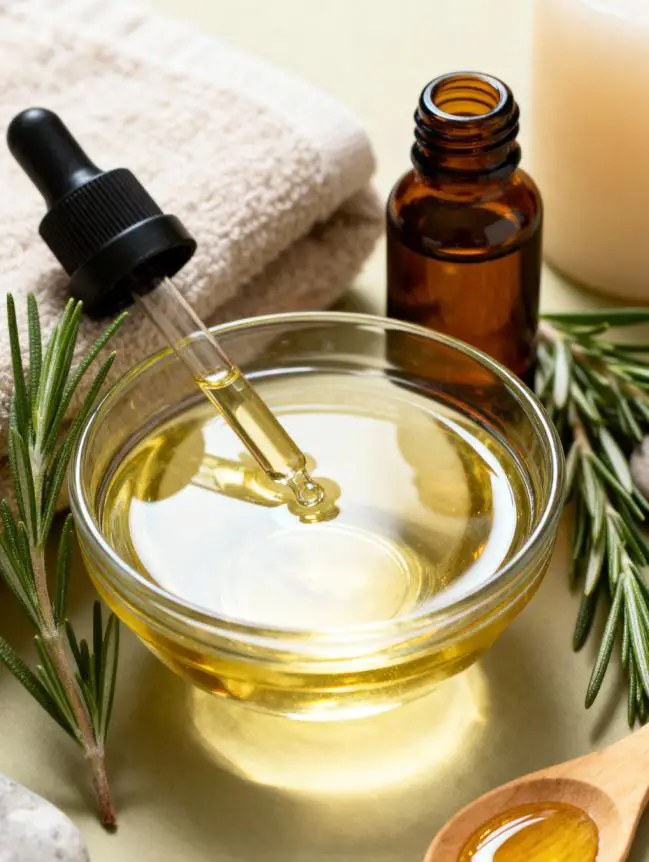
- Why it works: Rosemary boosts blood circulation; jojoba mimics natural sebum to balance moisture.
- How to apply: Warm 2 tablespoons of jojoba oil and add 5 drops of rosemary essential oil. Massage into scalp and rinse after 1 hour.
- Benefits: Stimulates growth and prevents follicle blockage.
9. Honey & Yogurt Shine Mask
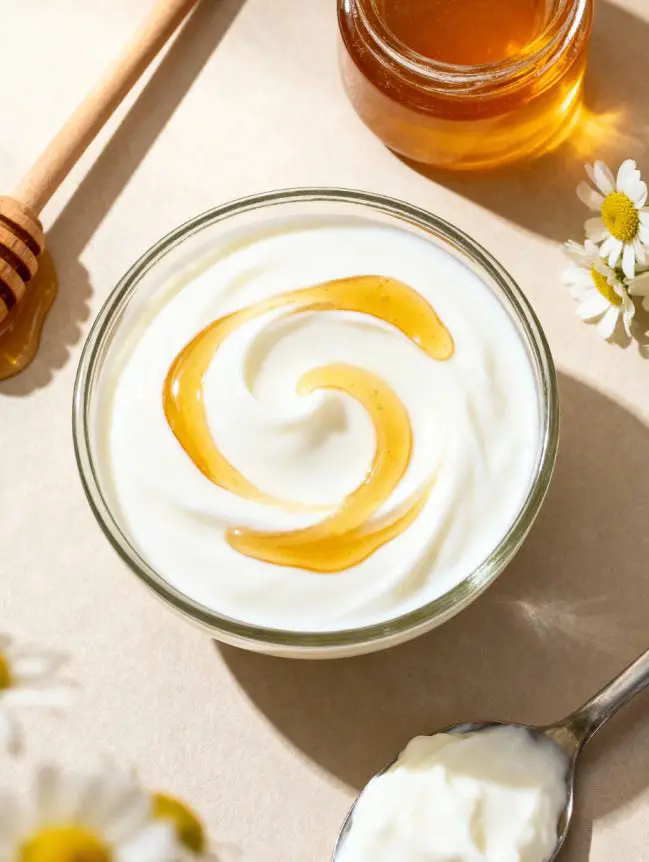
- Why it works: Lactic acid from yogurt exfoliates the scalp, while honey seals in hydration.
- How to apply: Mix 3 tablespoons of yogurt with 1 tablespoon of honey and apply for 20 minutes before rinsing.
- Benefits: Adds silky shine, controls frizz, and leaves hair soft to the touch.
10. Flaxseed Gel Strength Booster
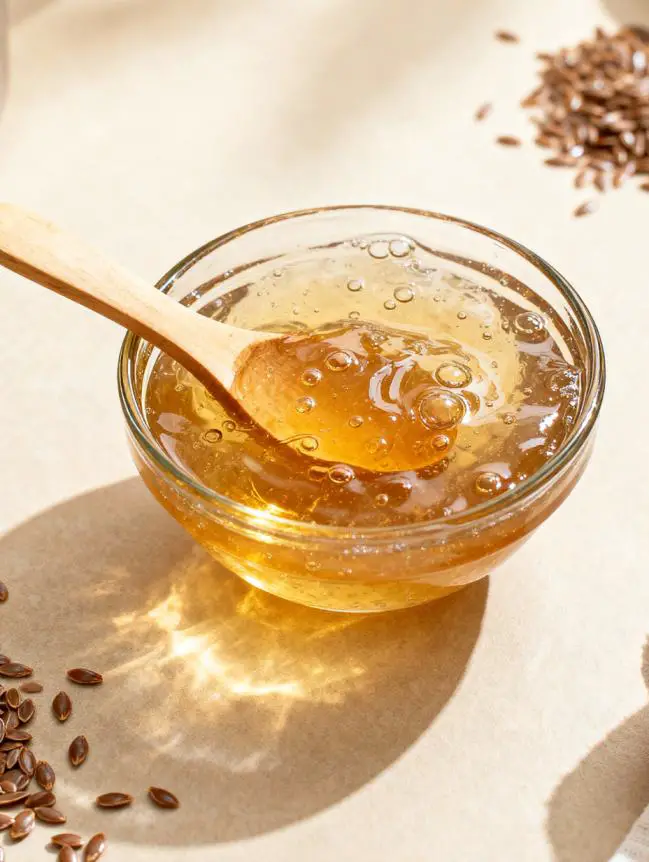
- Why it works: Flaxseeds are rich in omega-3 fatty acids and lignans that nourish follicles.
- How to apply: Boil ¼ cup of flaxseeds in 2 cups of water until it thickens. Strain, cool, and apply as a gel or leave-in mask for 20 minutes.
- Benefits: Adds natural hold and boosts elasticity for curly or wavy hair.
11. Hibiscus & Aloe Hydration Mask
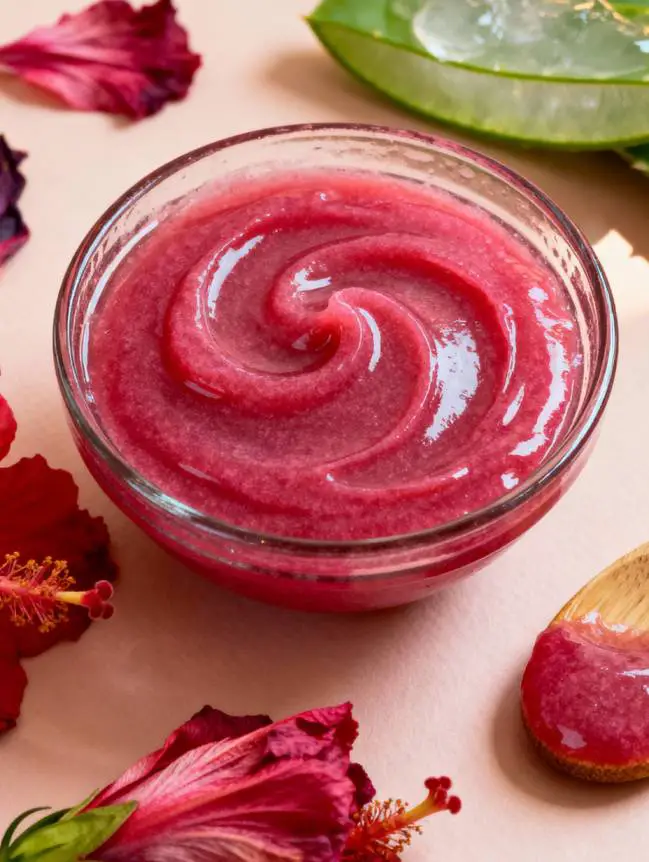
- Why it works: Hibiscus leaves and petals provide mucilage that moisturizes hair strands; aloe soothes and seals hydration.
- How to apply: Blend 4 hibiscus flowers with 2 tablespoons of aloe gel and apply for 30 minutes.
- Benefits: Boosts shine, reduces frizz, and promotes softness.
12. Apple Cider Vinegar Rinse
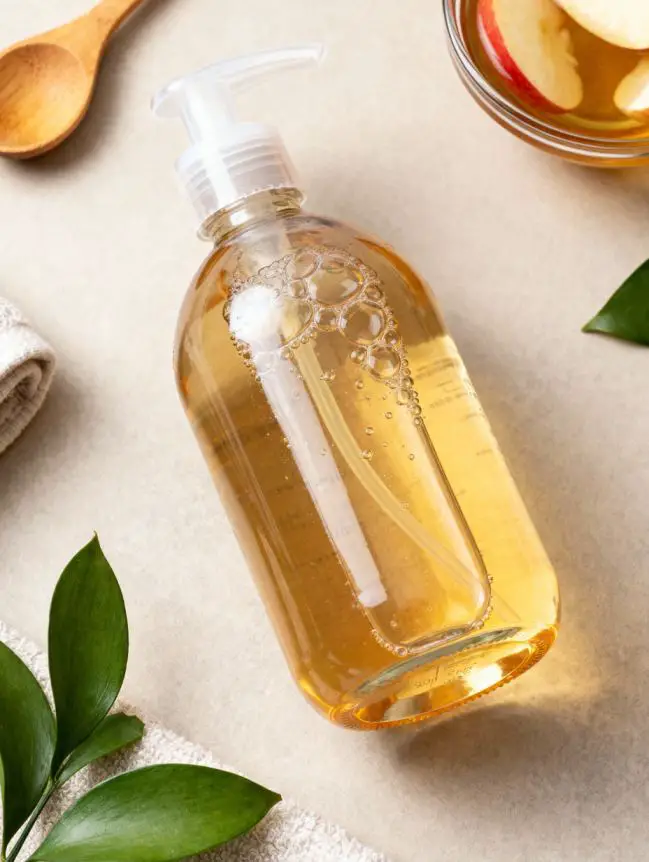
- Why it works: ACV balances scalp pH and removes buildup without stripping oils.
- How to apply: Mix 2 tablespoons of apple cider vinegar in 1 cup of water. After shampooing, pour over hair, let sit for 2 minutes, then rinse.
- Benefits: Enhances shine, detangles hair, and soothes itchy scalp.
13. Curry Leaf & Coconut Oil Growth Oil
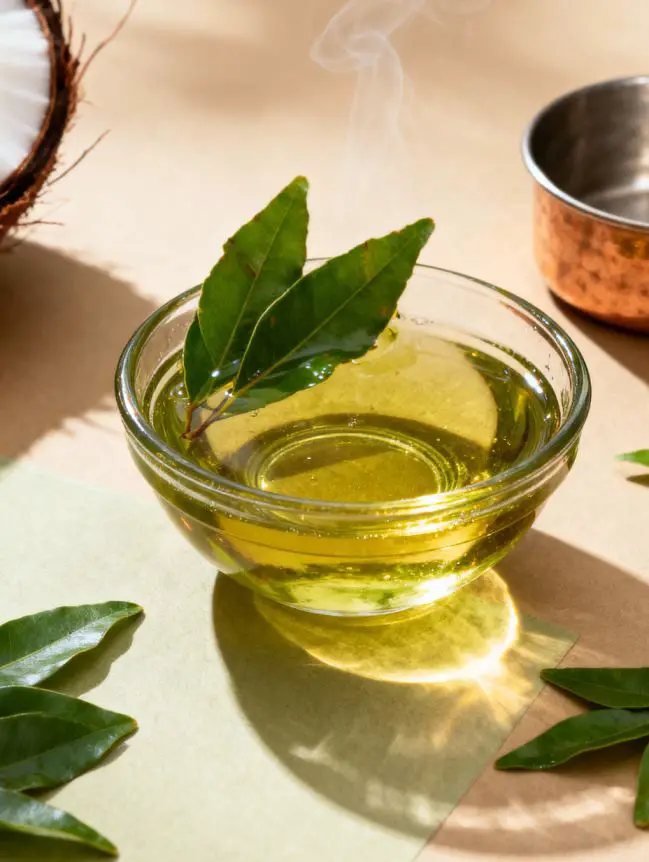
- Why it works: Curry leaves contain beta-carotene and proteins that prevent hair thinning.
- How to apply: Heat 10–12 curry leaves in 3 tablespoons of coconut oil until crisp. Cool and massage into scalp.
- Benefits: Reduces hair fall and strengthens roots naturally.
14. Onion Juice & Aloe Vera Scalp Tonic
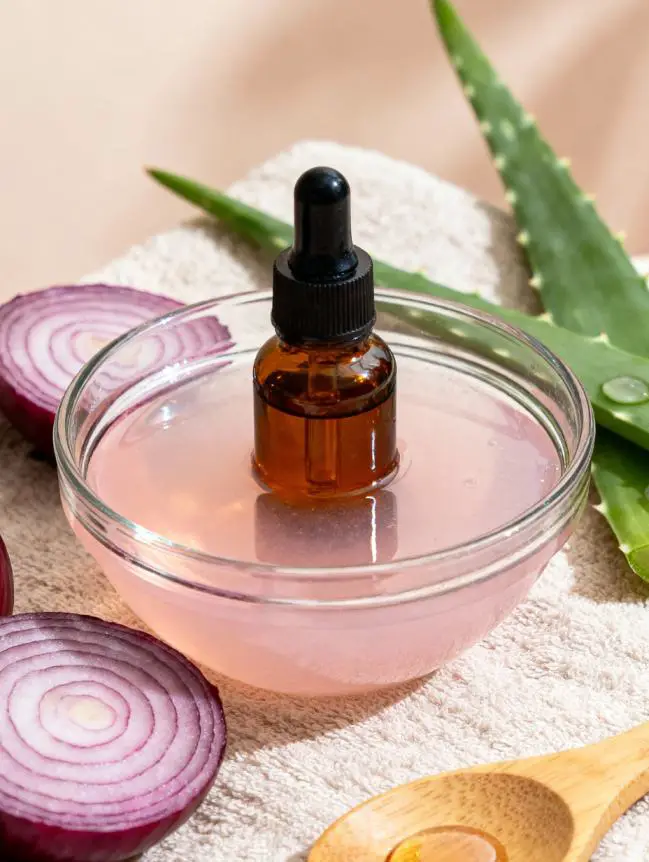
- Why it works: Sulfur in onion juice promotes collagen production; aloe vera calms irritation.
- How to apply: Mix 2 tablespoons of onion juice with 1 tablespoon of aloe gel, apply to scalp for 15–20 minutes, and rinse.
- Benefits: Stimulates regrowth and strengthens hair follicles.
These methods keep hair strong between salon visits. They work best when combined with gentle morning styles that don’t undo nighttime repair work.
Styling Ideas Inspired by Latest Trends and Web Sources
Modern styling merges fashion with hair care innovation. Designers and trichologists now collaborate to create looks that protect strands while making waves online. These approaches blend ancient braiding wisdom with contemporary textures for everyday wearability.
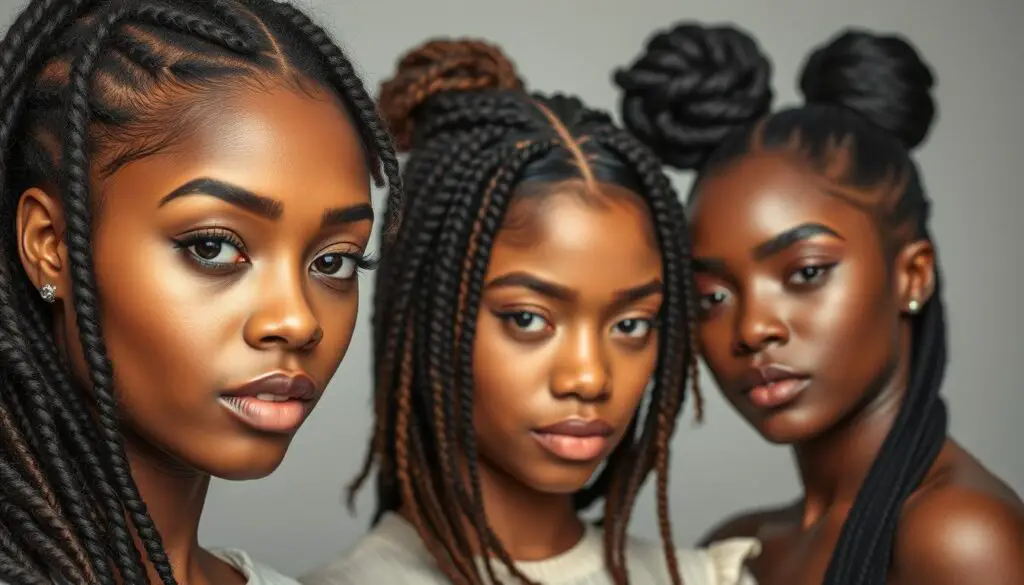
Chignons, Braided Buns, and Twisted Styles
These timeless updos combine elegance with protection. They keep your hair secure, reduce friction, and prevent tension that leads to breakage — all while giving you a sophisticated, camera-ready look.
1️⃣ Low Classic Chignon
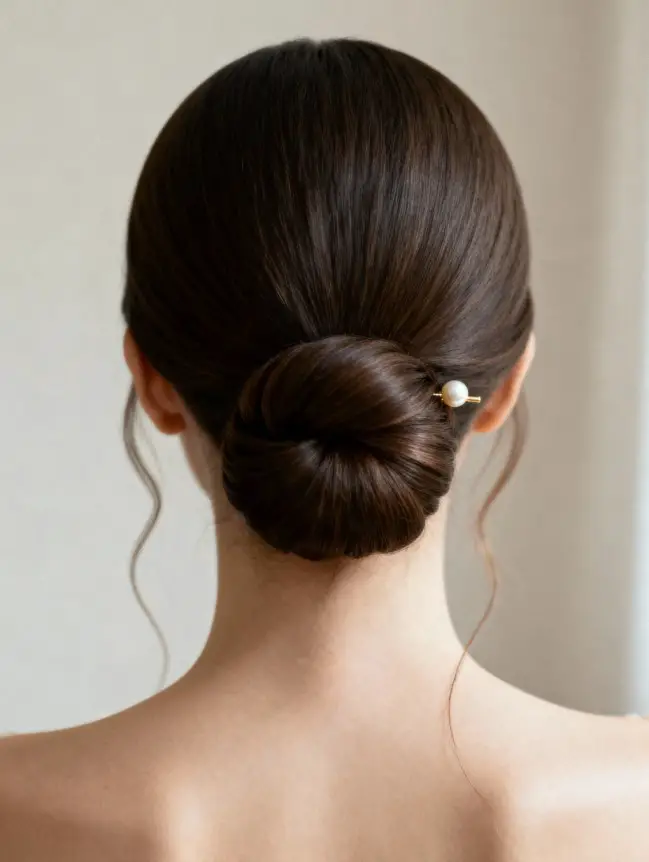
- Why it works: The low placement reduces tension on the crown and temples.
- How to do it: Gather your hair into a low ponytail, twist it loosely, and coil it into a bun at the nape of your neck. Secure with spin pins or bobby pins instead of tight elastics.
- Benefits: Sleek and professional; perfect for workdays, formal events, or travel days when you want minimal friction on your strands.
2️⃣ Braided Chignon
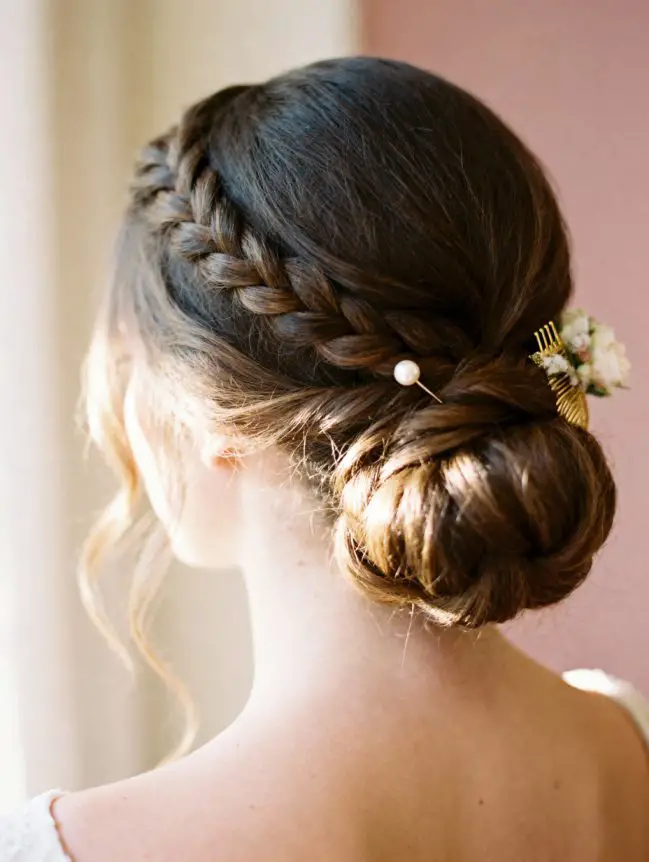
- Why it works: Braiding adds texture and stability without needing tight grips.
- How to do it: Braid your hair loosely, then twist it around itself into a bun and pin it gently.
- Benefits: Provides a full, elegant look while keeping strands contained and protected from tangling.
3️⃣ Twisted Low Bun
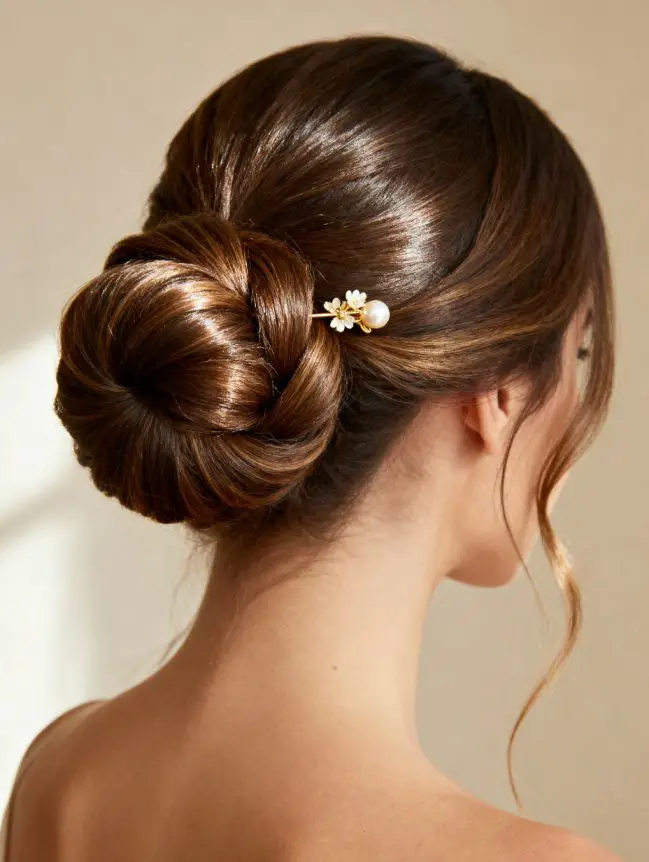
- Why it works: Twisting allows strands to align naturally instead of pulling them tight.
- How to do it: Divide your hair into two sections, twist each loosely, and cross them over into a bun. Secure with a silk scrunchie or ribbon.
- Benefits: Soft, romantic appearance with minimal strain on roots.
4️⃣ Loose Braided Bun
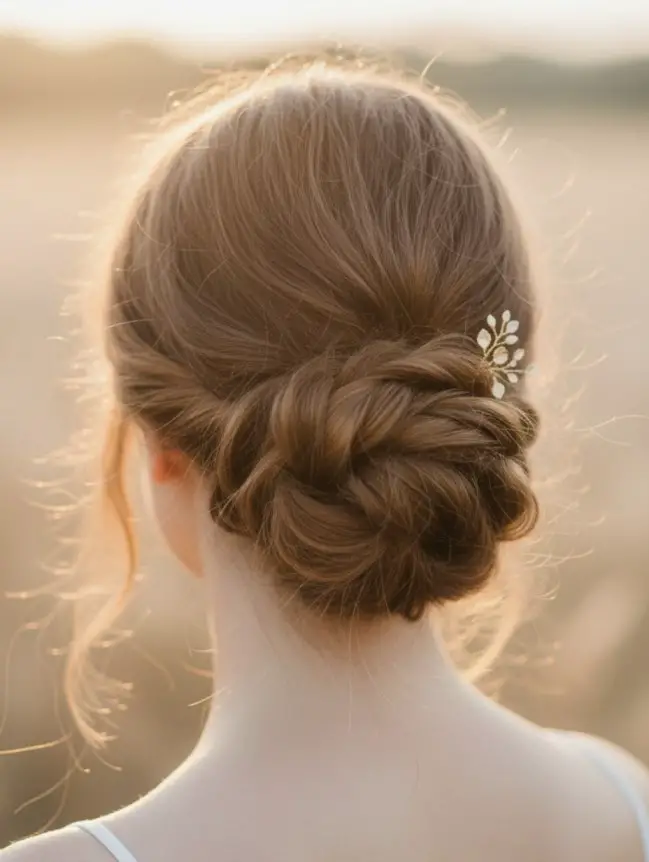
- Why it works: Combines flexibility with hold — ideal for medium to long hair.
- How to do it: Create a loose three-strand braid and wrap it into a bun, pinning the ends gently.
- Benefits: Prevents friction damage, protects ends, and maintains volume throughout the day.
5️⃣ Side Chignon
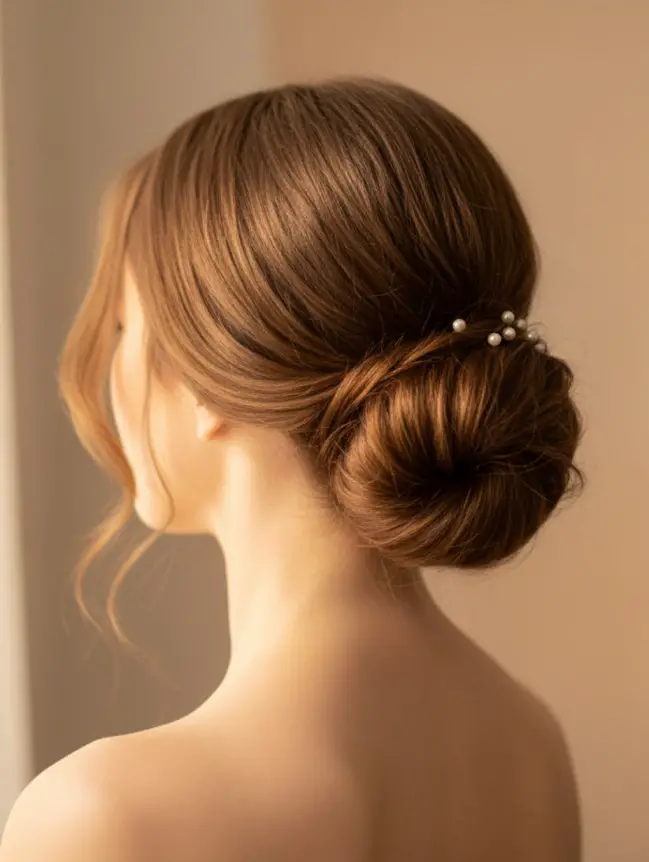
- Why it works: Shifts tension away from the crown while adding an asymmetrical, modern twist.
- How to do it: Gather your hair to one side near the jawline, twist lightly, and pin into a side bun.
- Benefits: Elegant yet gentle — perfect for special occasions or when you want a chic, effortless vibe.
6️⃣ Braided Crown Bun
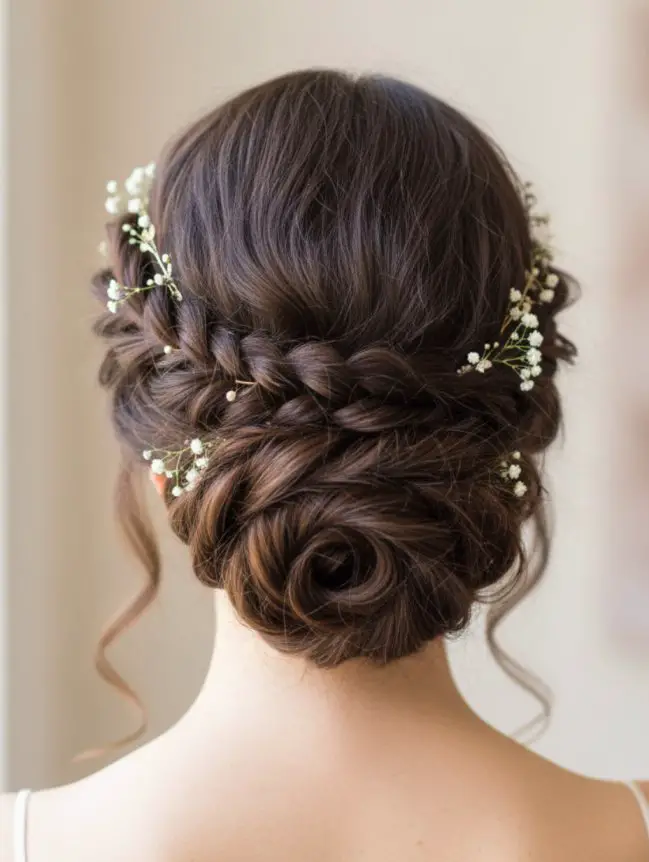
- Why it works: Distributes hair weight evenly across the scalp, preventing pressure points.
- How to do it: Create a braid along the perimeter of your head (like a halo), then tuck the ends into a small bun at the back.
- Benefits: Great for hot or humid days — keeps hair off your neck while protecting fragile strands.
7️⃣ French Twist Bun
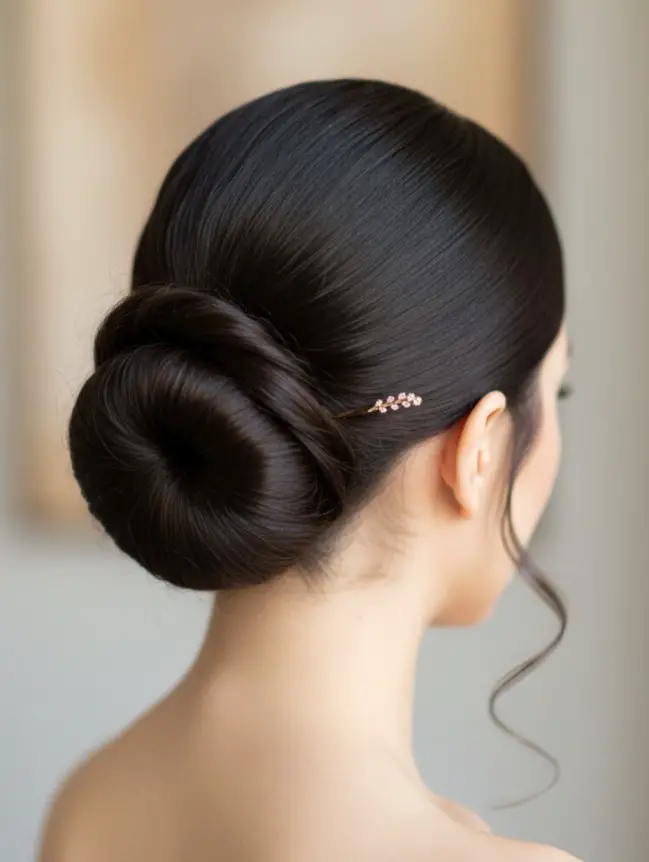
- Why it works: The twisting motion holds hair naturally without elastic stress.
- How to do it: Gather hair at the nape, twist upward, and tuck the ends in; secure with pins or a decorative clip.
- Benefits: Ideal for fine or fragile hair that can’t handle tight elastics; adds volume and sleekness.
8️⃣ Braided Rope Bun
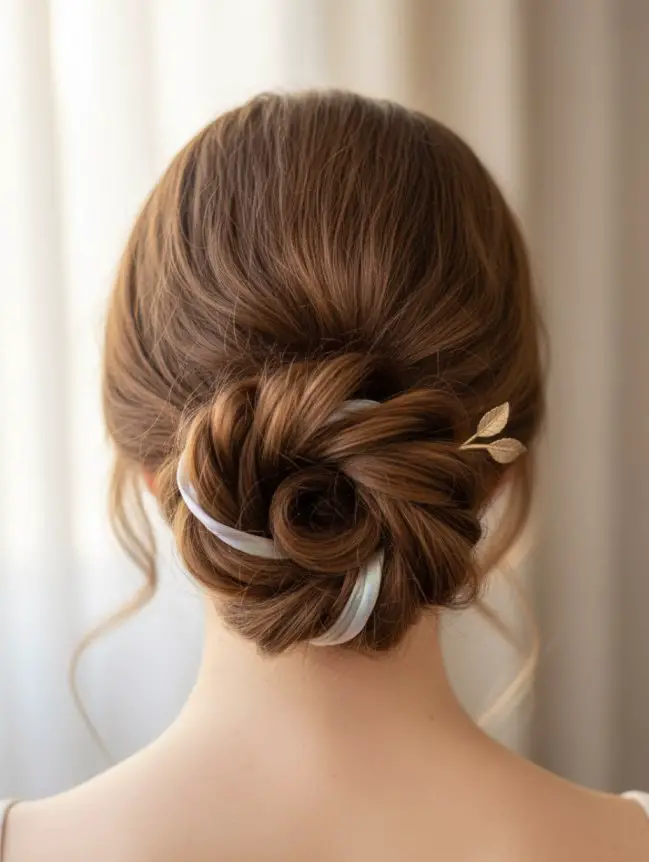
- Why it works: Rope braids reduce tangling and stay secure with minimal pressure.
- How to do it: Divide your ponytail into two sections, twist each clockwise, then wrap them together counterclockwise into a bun.
- Benefits: Lasts all day, adds a textured finish, and avoids scalp soreness.
9️⃣ Loose Twisted Knot
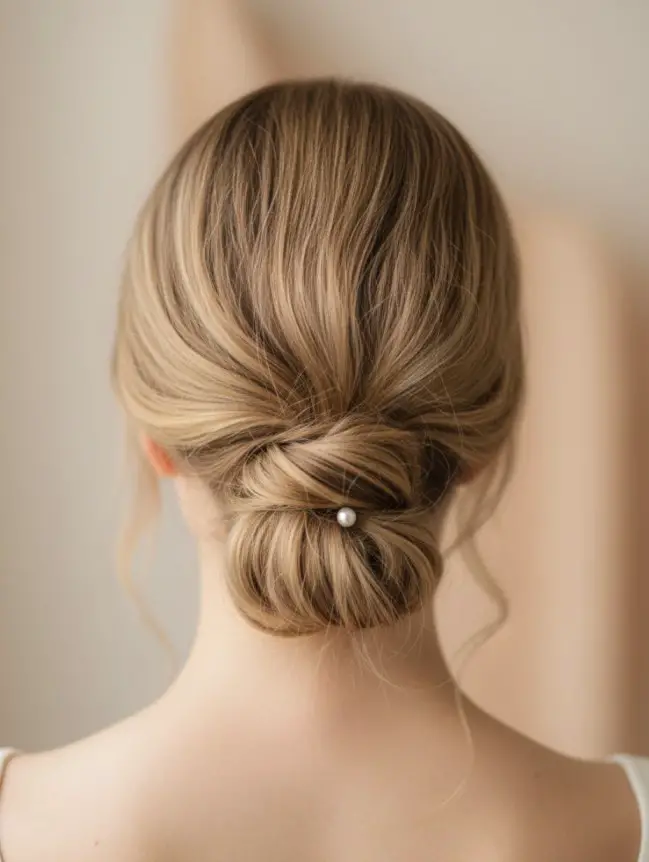
- Why it works: The knot holds hair naturally in place with no pulling.
- How to do it: Twist your hair once or twice into a looped knot, secure with a claw clip or silk ribbon.
- Benefits: Perfect for casual days or quick fixes; adds effortless softness to your look.
🔟 Half-Up Braided Bun
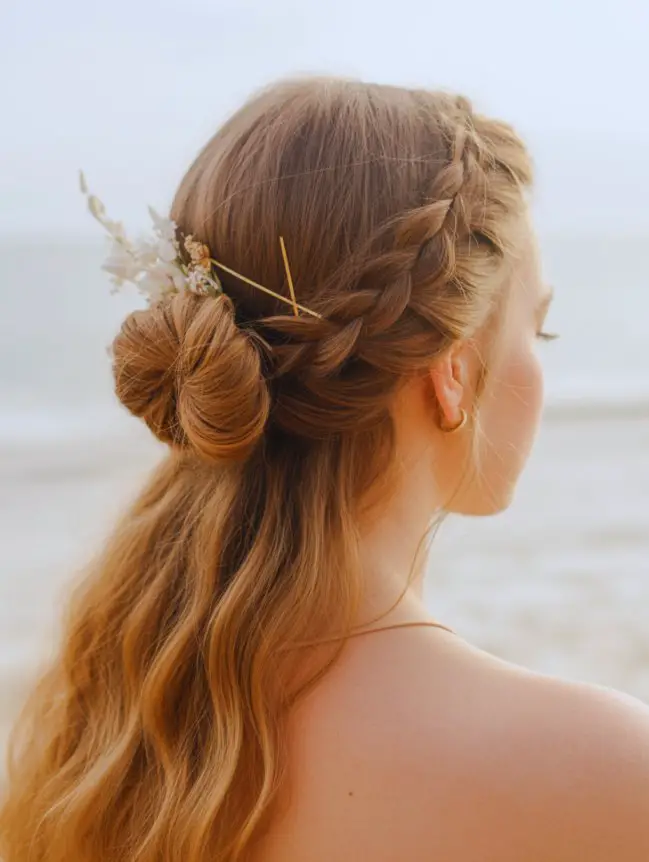
- Why it works: Keeps top layers tidy while letting the rest of the hair move freely.
- How to do it: Braid a small section from the crown, twist it into a bun, and leave the lower half loose.
- Benefits: Prevents scalp tension, creates instant volume, and works beautifully on all hair types.
11️⃣ Messy Twisted Chignon
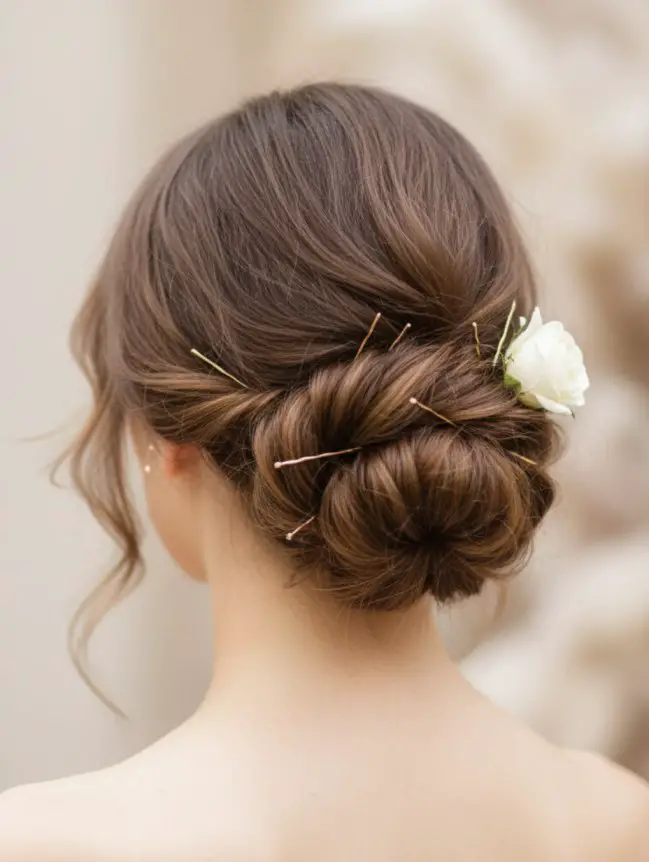
- Why it works: The looseness prevents strain and adds volume naturally.
- How to do it: Twist hair loosely at the nape and secure with pins, letting a few strands fall freely.
- Benefits: Romantic and gentle; ideal for dry or frizzy hair since it hides imperfections stylishly.
12️⃣ Braided Side Bun with Ribbon
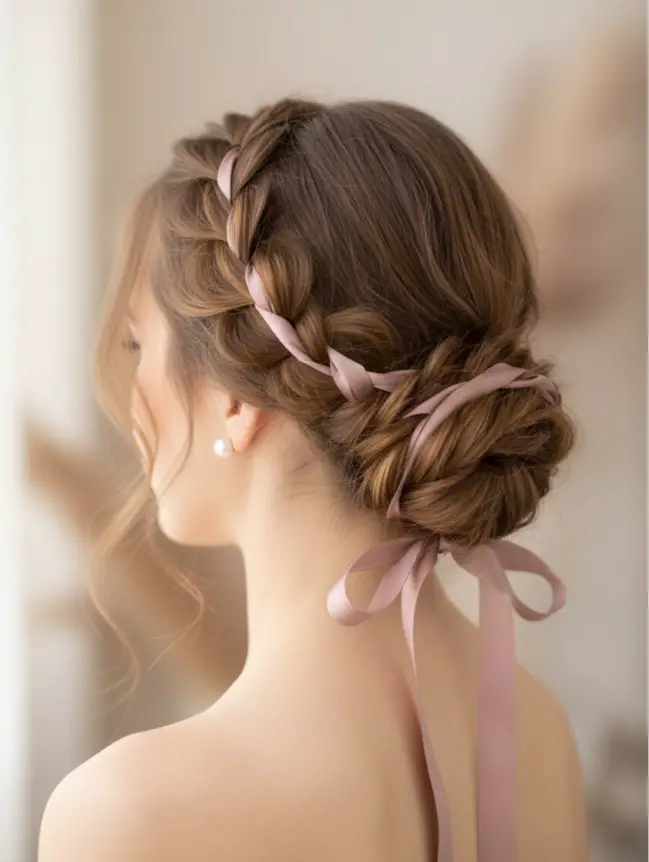
- Why it works: Fabric distributes pressure more evenly than metal pins or tight ties.
- How to do it: Make a loose braid, wrap it into a bun near one ear, and tie with a silk ribbon.
- Benefits: Protects ends, adds softness, and complements feminine outfits.
13️⃣ Twisted Double Bun (Two Low Twists)
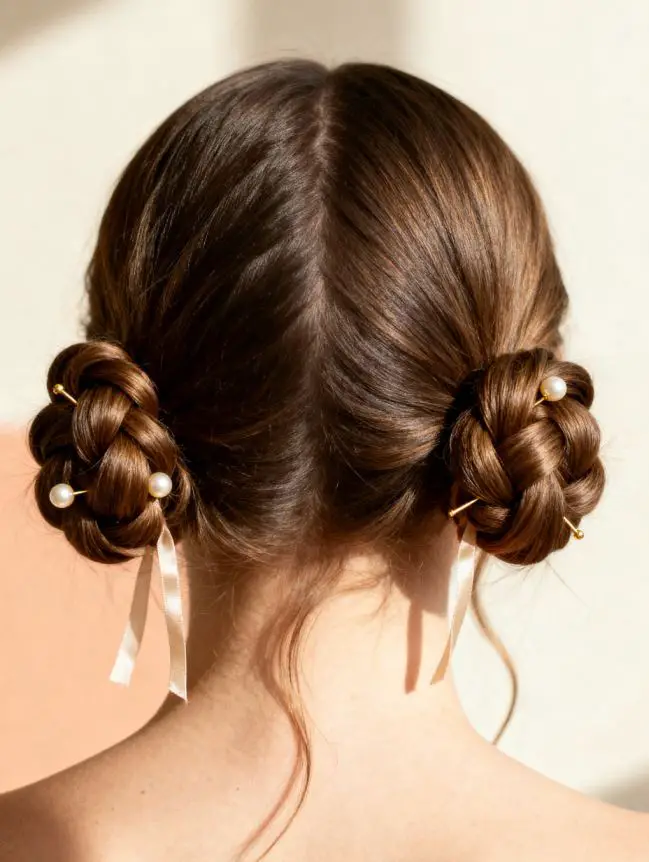
- Why it works: Splits the weight of your hair into two sections for less scalp stress.
- How to do it: Part your hair in half, twist each side into a low bun, and pin gently.
- Benefits: Reduces tension, adds playful symmetry, and works great for thick or heavy hair.
14️⃣ Braided Bun with Silk Scarf
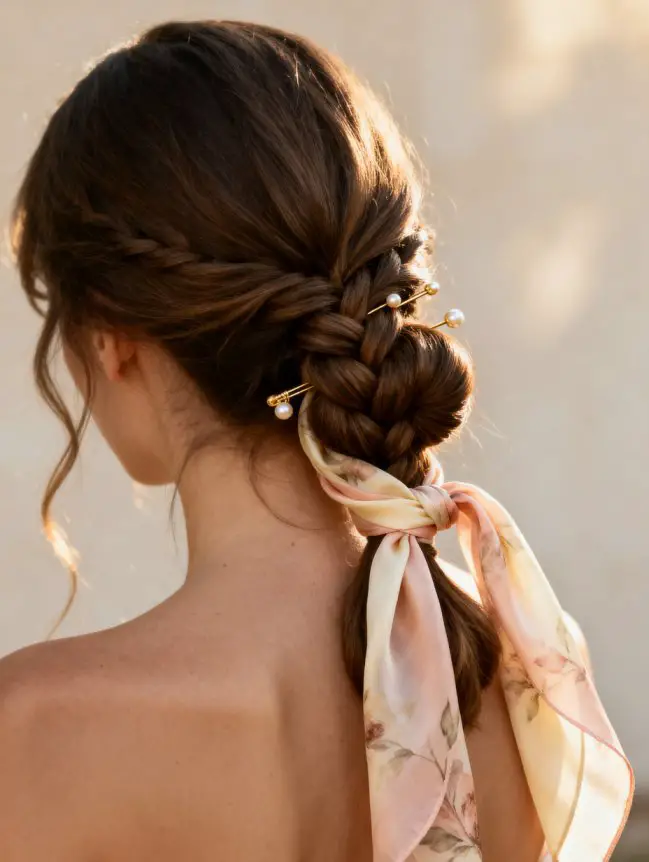
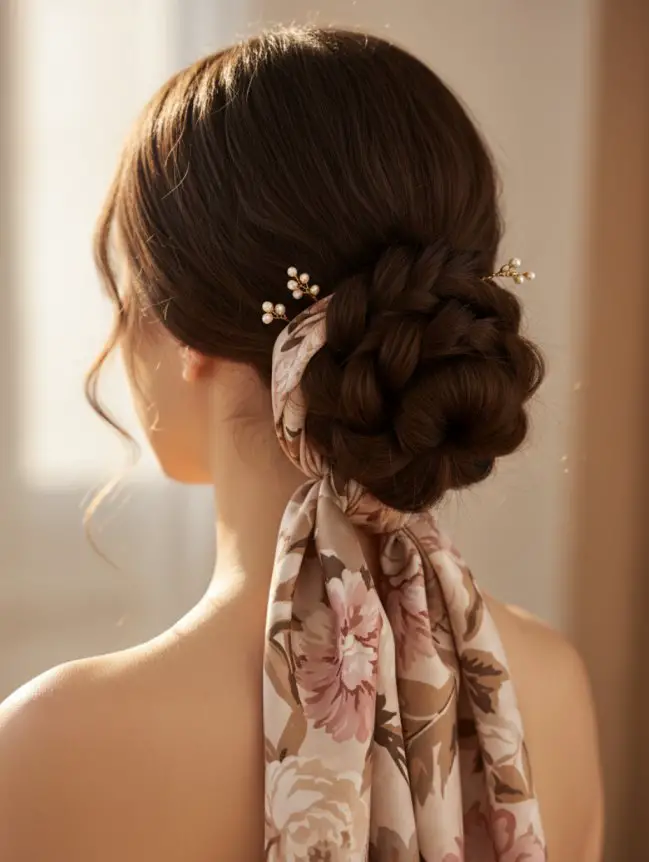
- Why it works: The scarf reduces friction and secures hair without tight pulling.
- How to do it: Braid a low ponytail, wrap a thin silk scarf around it, and coil into a bun.
- Benefits: Stylish and gentle; protects ends and adds flair to everyday looks.
15️⃣ Loose Spiral Bun
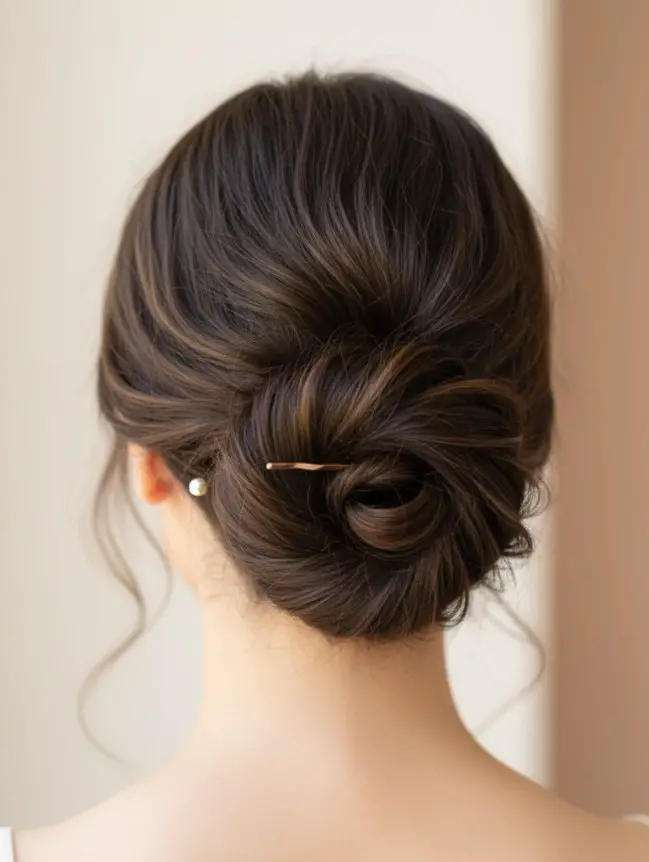
- Why it works: Spiral wrapping keeps the bun secure with minimal pressure.
- How to do it: Roll your ponytail around itself in wide spirals and secure lightly with a pin or clip.
- Benefits: Maintains fullness, prevents tangling, and is perfect for medium-length hair.
Seasonal Looks That Prioritize Healthy Hair
Every season brings its own challenges — UV rays, dry air, humidity, or wind. These low-tension, protective hairstyles keep your hair healthy while adapting beautifully to the weather. Each idea focuses on comfort, style, and strand protection year-round.
1. Summer: Loose Milkmaid Braids with Silk Scarf
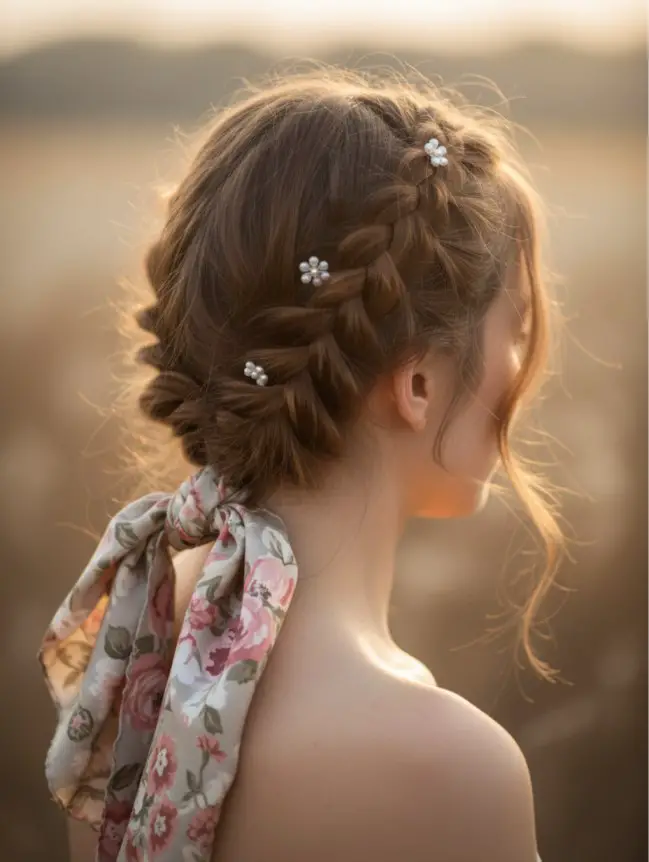
- Why it works: Keeps hair off your neck and shields strands from UV damage.
- How to do it: Part hair down the middle, braid both sides loosely, and pin across the crown. Wrap a silk scarf around your head for extra protection.
- Benefits: Prevents sun exposure, reduces sweat buildup, and gives a boho-chic look.
2. Summer: Low Twisted Bun with Leave-In Conditioner
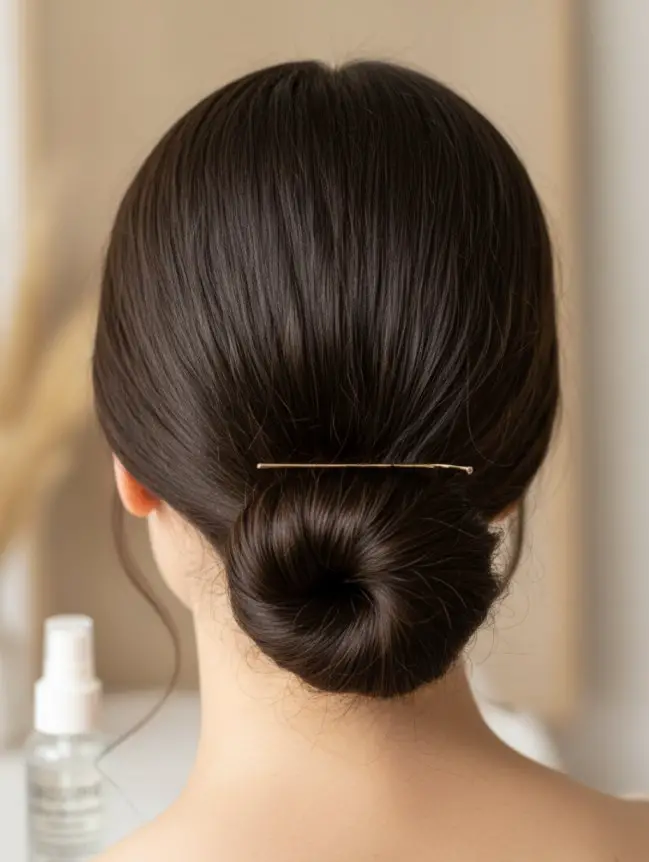
- Why it works: Locks in moisture while keeping hair neat in heat.
- How to do it: Apply a lightweight leave-in conditioner, twist hair into a low bun, and secure with a satin scrunchie.
- Benefits: Protects from humidity frizz and sun dryness; ideal for pool days.
3. Summer: Braided Ponytail Wrap
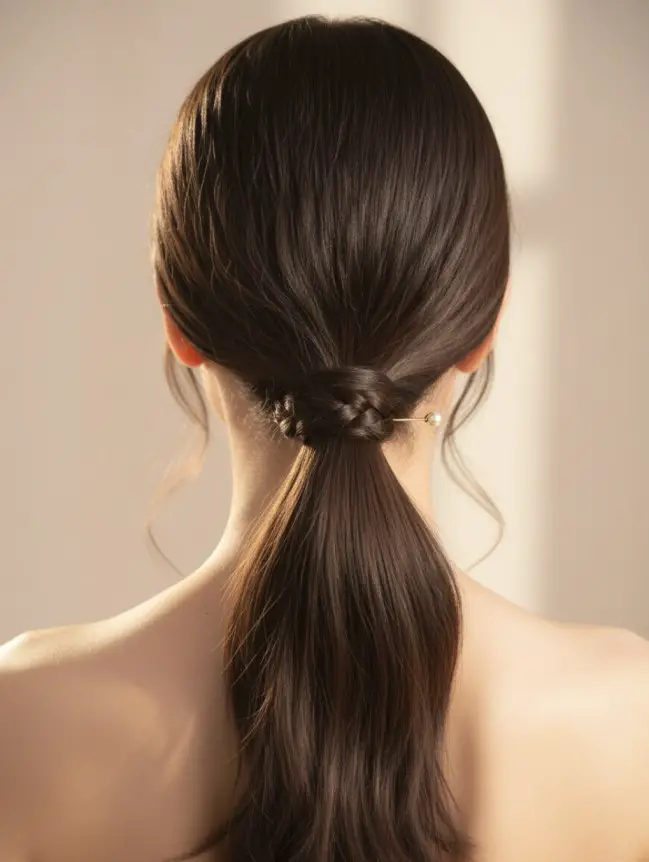
- Why it works: Reduces friction and prevents tangles from wind or sweat.
- How to do it: Make a low ponytail, braid it halfway, and wrap the end with a silk ribbon.
- Benefits: Stylish yet functional; perfect for travel or beach walks.
4. Summer: Loose Top Knot with Scarf Tie
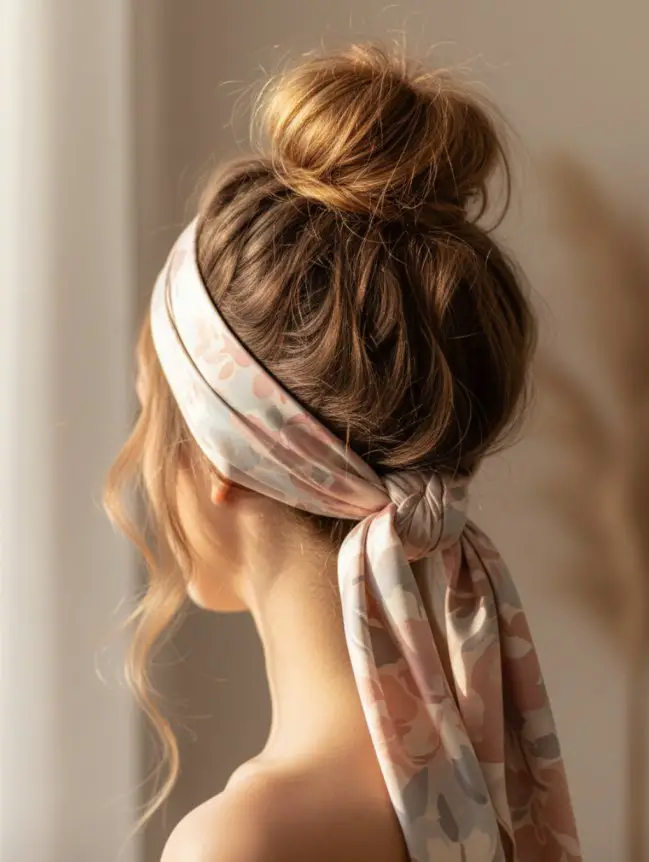
- Why it works: Keeps roots ventilated while maintaining softness.
- How to do it: Gather hair loosely into a top bun and tie a patterned scarf around it.
- Benefits: Lightweight, heat-proof, and fashion-forward.
5. Braided Crown Updo
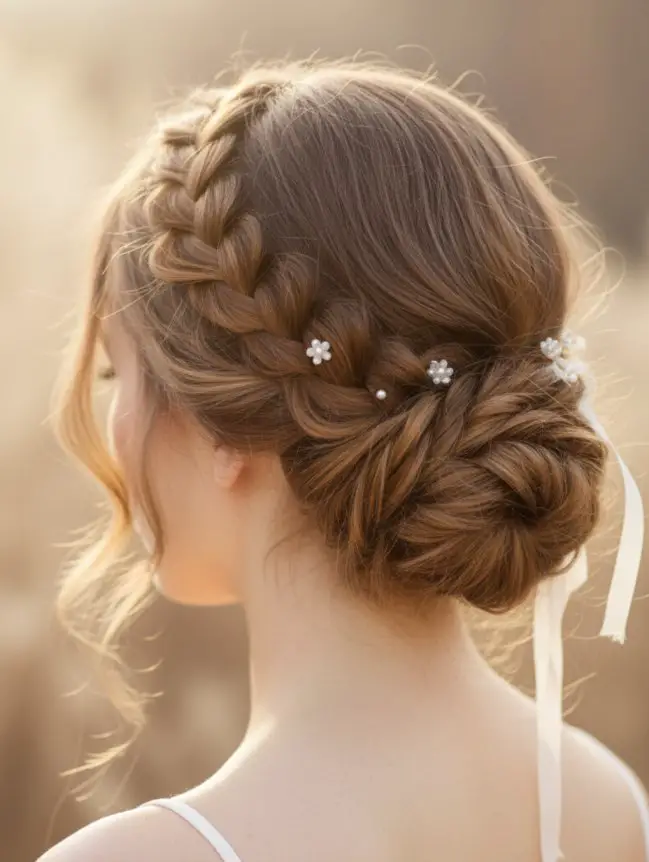
- Why it works: Prevents frizz caused by humidity while protecting the hairline.
- How to do it: Braid both sides of your hair and pin them across the crown.
- Benefits: Keeps hair contained and tangle-free even in damp air.
6. Monsoon: Side Twisted Bun
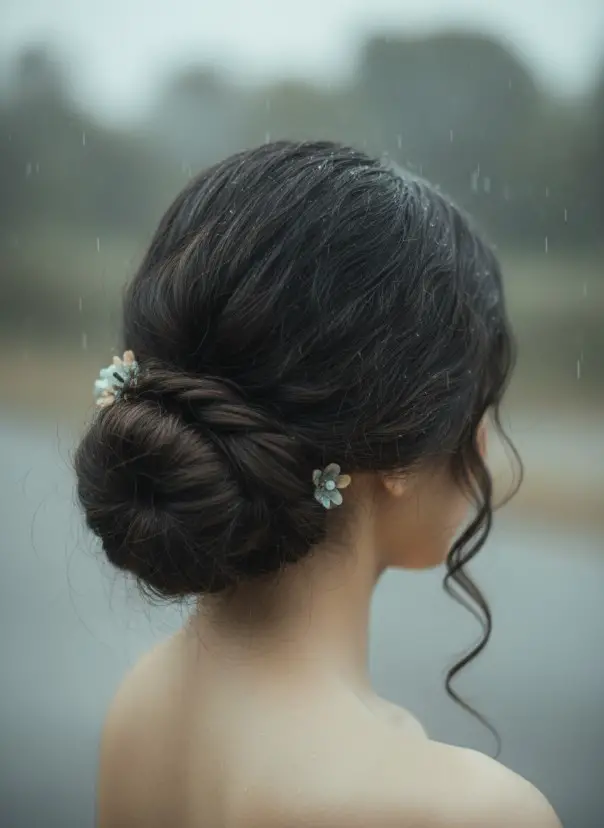
- Why it works: Avoids water-frizzed strands clinging to your face.
- How to do it: Twist your hair from one side and roll it into a bun behind the ear.
- Benefits: Simple, sleek, and prevents scalp buildup in humid weather.
7. Monsoon: Low Braided Ponytail
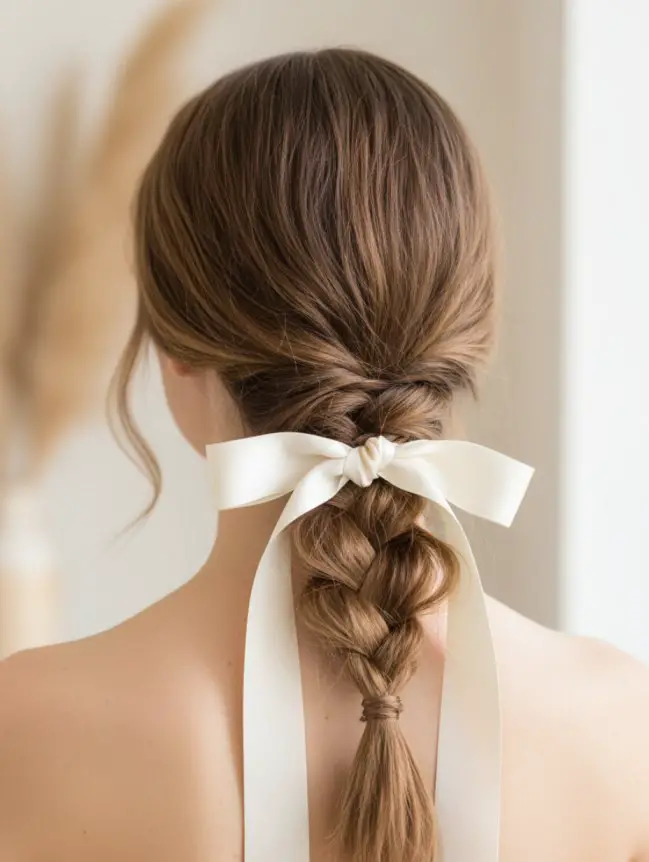
- Why it works: Keeps strands secure during rainy days and prevents knots.
- How to do it: Make a low ponytail and loosely braid it to the ends.
- Benefits: Low-maintenance and rain-resistant.
8. Autumn: Half-Up Twisted Crown
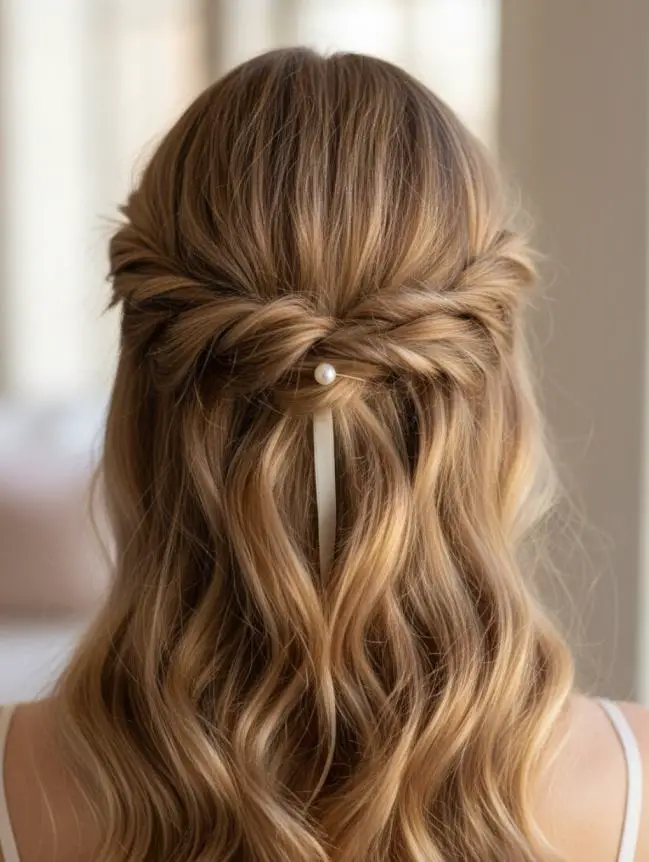
- Why it works: Perfect for transitional weather — gives movement without heaviness.
- How to do it: Twist small front sections toward the back and clip loosely.
- Benefits: Keeps volume intact while preventing dryness from early seasonal changes.
9. Autumn: Low Braided Chignon
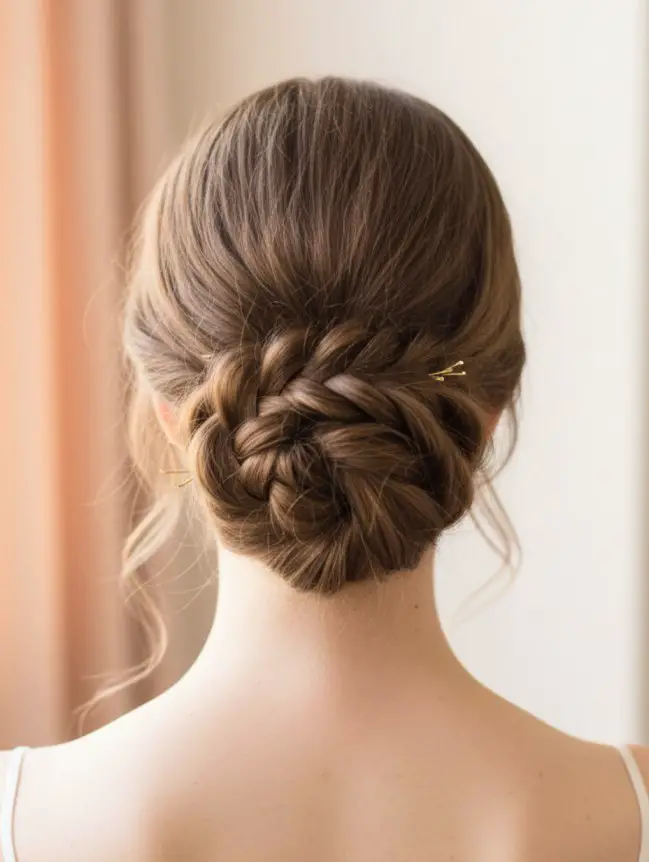
- Why it works: Elegant and protective for slightly cool, breezy days.
- How to do it: Braid hair loosely, wrap it into a low bun, and secure gently.
- Benefits: Adds sophistication and prevents tangles in wind.
10. Autumn: Ribbon-Wrapped Ponytail
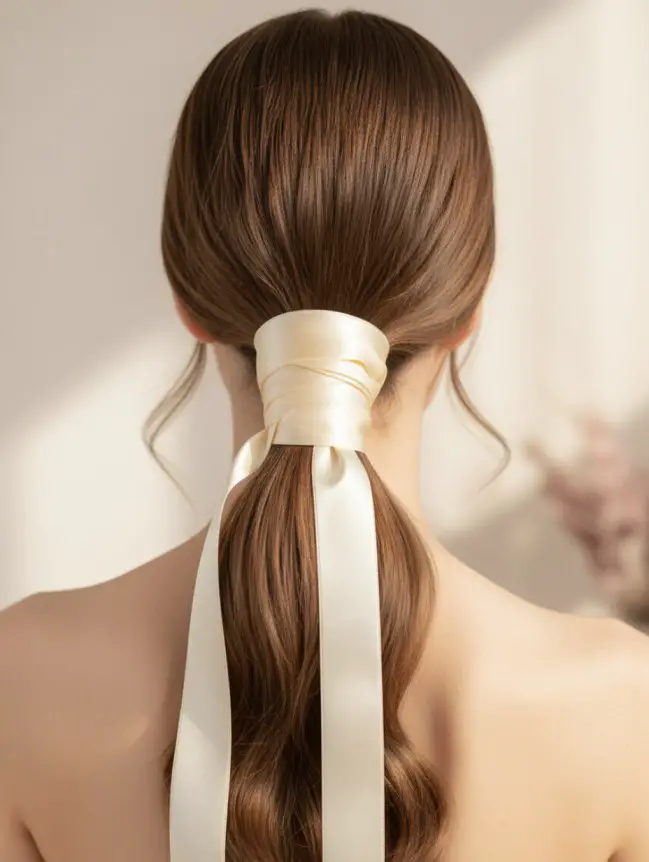
- Why it works: Fabric ribbons prevent static and add a romantic fall touch.
- How to do it: Tie hair low and wrap a ribbon around the base.
- Benefits: Reduces friction from sweaters and scarves.
11. Winter: Tucked French Twist
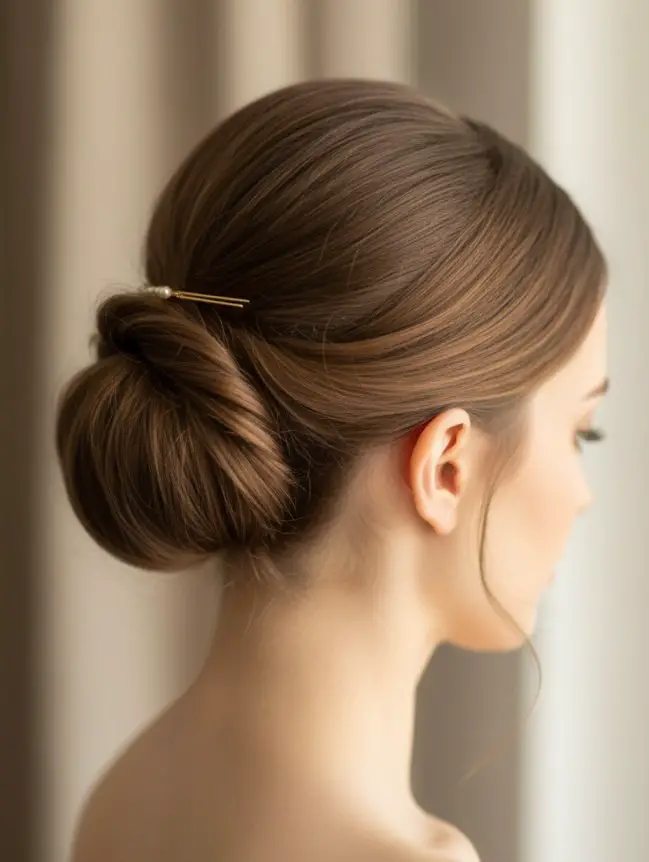
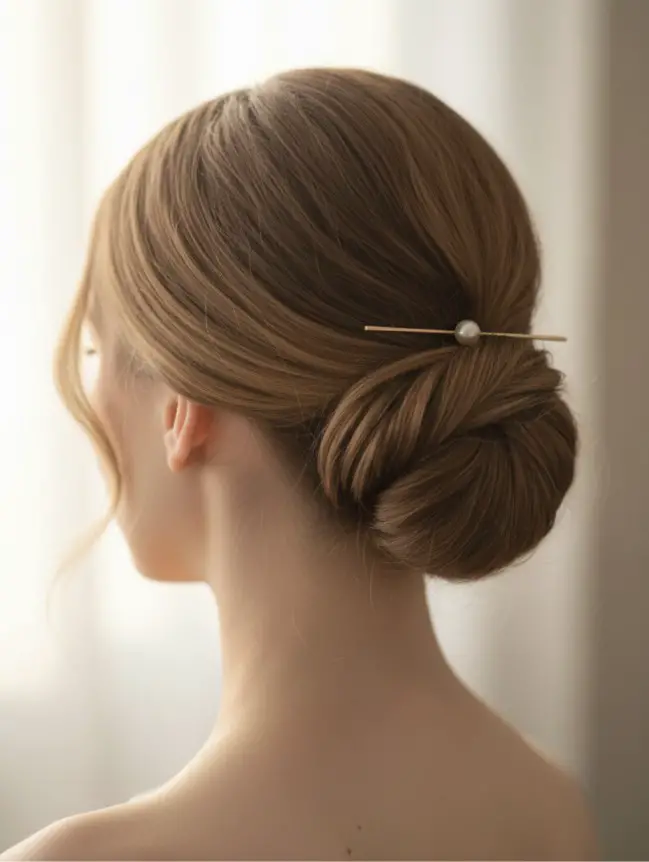
- Why it works: Protects ends from cold, dry air and friction from coats.
- How to do it: Twist hair gently upward and tuck ends inside the roll.
- Benefits: Keeps hair smooth under scarves or jackets.
12. Winter: Loose Rope Braid Pigtails
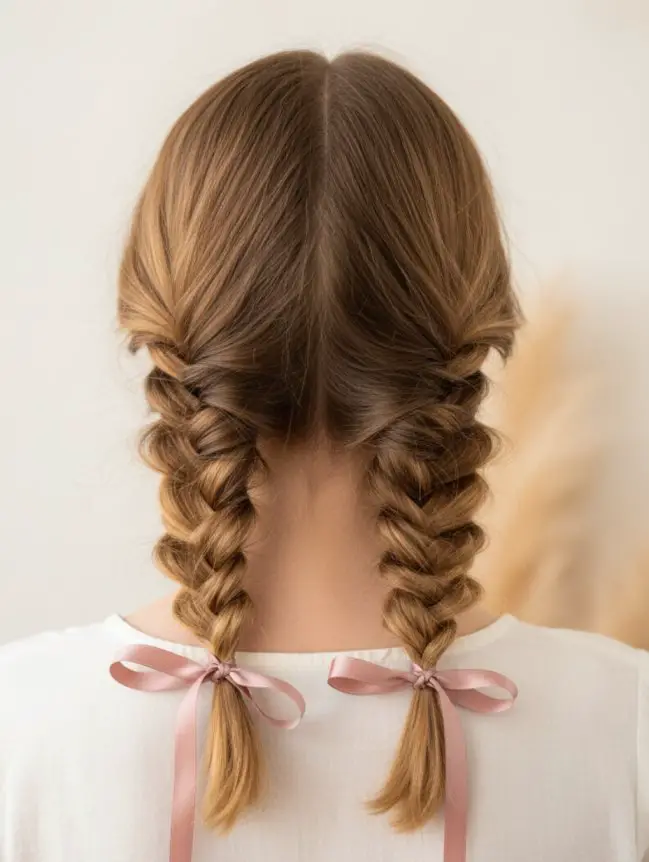
- Why it works: Distributes tension and reduces breakage caused by dry air.
- How to do it: Divide hair in half, twist each side into a rope braid, and secure softly.
- Benefits: Warm, cozy, and easy to wear under hats.
13. Spring: Half-Up Braided Flower Bun
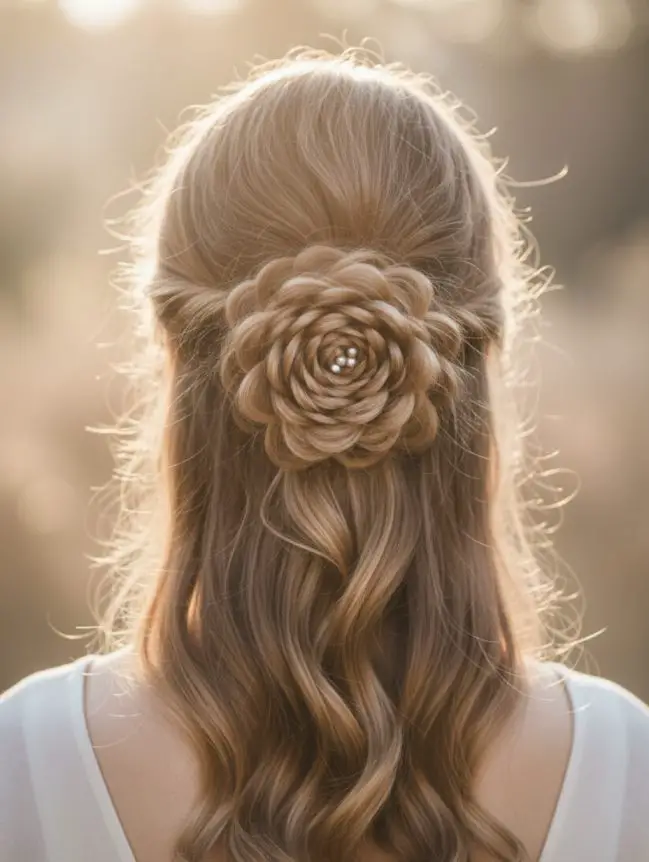
- Why it works: Adds texture and freshness while letting hair breathe.
- How to do it: Braid a section from the crown, coil it into a “flower” bun, and pin gently.
- Benefits: Lightweight, feminine, and prevents frizz from spring humidity.
14. Spring: Twisted Ponytail with Hair Clip
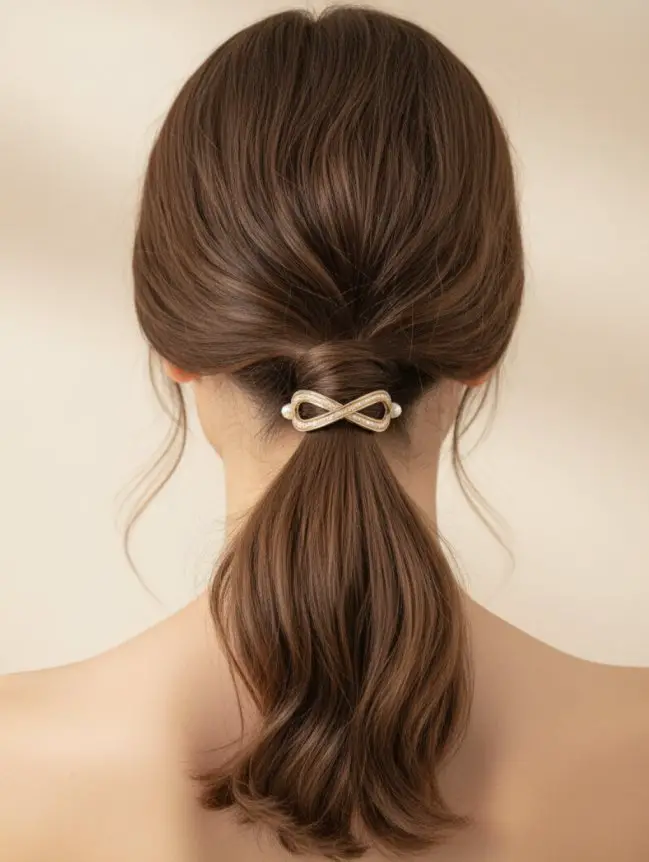
- Why it works: Keeps flyaways tamed while embracing movement.
- How to do it: Twist both sides toward the back and secure with a claw clip above the nape.
- Benefits: Minimal friction, easy to restyle, and ideal for breezy spring mornings.
🌸 Pro Tip
Rotate these seasonal styles monthly to prevent repetitive tension on the same scalp areas. Pair each with silk or satin accessories — they minimize friction, preserve hydration, and make every look healthier.
Integrating Expert Advice from Top Hair Blogs
Top hairstylists and trichologists agree: healthy styling is all about balance, rotation, and smart protection. Here’s a roundup of expert-backed techniques and styling principles inspired by leading beauty blogs and hair specialists. Each one is simple, practical, and keeps your strands stress-free.
1️⃣ The 30-Minute Rule
- Expert Insight: The team at The Curl Ninja and Naturally Curly blog emphasizes never keeping any hairstyle tightly secured for more than 30 minutes.
- Why it works: Prolonged tension reduces scalp circulation and weakens follicles.
- How to apply: Loosen or restyle your hair briefly every few hours. Massage your scalp lightly before redoing your style.
- Benefit: Prevents tension-related hair thinning and relieves pressure points.
2️⃣ Pre-Styling with Aloe Gel
- Expert Insight: Curl-care blogs recommend using aloe vera gel as a lightweight pre-styler.
- Why it works: Aloe’s natural enzymes coat the hair shaft, reducing friction and breakage during manipulation.
- How to apply: Spread a small amount through damp hair before braiding or twisting.
- Benefit: Gives smooth hold without stiffness or buildup.
3️⃣ Heat Styling Under 300°F
- Expert Insight: Professional stylists like Manes by Mell and The Hair Routine suggest keeping all heat tools under 300°F (150°C).
- Why it works: Higher temperatures destroy keratin bonds and strip moisture.
- How to apply: Always apply heat protectant spray and finish with a cold-air blast to seal cuticles.
- Benefit: Maintains strength and elasticity even with occasional styling.
4️⃣ Switch Your Part Regularly
- Expert Insight: Trichologists emphasize rotating your hair part every few days.
- Why it works: Constant parting in one area stresses the same follicles repeatedly.
- How to apply: Alternate between middle, side, and zig-zag parts weekly.
- Benefit: Promotes even hair growth and prevents thinning spots.
5️⃣ Silk Over Cotton Always
- Expert Insight: Hair experts from The Everygirl and Byrdie highlight how silk accessories outperform cotton ties and pillowcases.
- Why it works: Silk reduces friction by 78% and maintains moisture levels overnight.
- How to apply: Use silk scrunchies, scarves, and pillowcases in your daily routine.
- Benefit: Minimizes tangles, frizz, and split ends — especially for curly or fine hair.
6️⃣ The “No Product Overload” Rule
- Expert Insight: Celebrity stylists warn that heavy layering of serums, oils, and sprays suffocates follicles.
- Why it works: Buildup traps dirt and reduces oxygen flow to roots.
- How to apply: Use 1–2 light products max (a serum and a leave-in), and clarify weekly with a gentle shampoo.
- Benefit: Keeps scalp balanced and hair naturally voluminous.
7️⃣ Cool Down After Styling
- Expert Insight: Many stylists recommend ending with a cold-air blow after heat styling.
- Why it works: Cool air helps seal the cuticle layer, locking in shine and reducing frizz.
- How to apply: After curling or straightening, set the hairdryer to cool and move it gently over styled sections.
- Benefit: Longer-lasting results and stronger, smoother strands.
8️⃣ Incorporate Scalp Massages
- Expert Insight: Beauty blogs like The Hair Fuel emphasize scalp massage for growth and stress relief.
- Why it works: Increases blood circulation and boosts nutrient delivery to follicles.
- How to apply: Use fingertips or a silicone scalp brush for 3–5 minutes daily with light oils like jojoba or rosemary.
- Benefit: Promotes thicker, healthier hair over time.
9️⃣ Clarify Monthly
- Expert Insight: The experts at Love Hair Blog recommend monthly clarifying sessions.
- Why it works: Residue from styling products and hard water weakens roots.
- How to apply: Use an apple cider vinegar rinse or clarifying shampoo once every 4 weeks.
- Benefit: Resets scalp health and improves product absorption.
🔟 Alternate Tight and Loose Days
- Expert Insight: Hairstylists suggest mixing high-tension and loose hairstyles across your week.
- Why it works: Prevents repetitive strain on certain scalp areas and gives follicles rest time.
- How to apply: If you wear a ponytail on Monday, go for a low braid or open hair on Tuesday.
- Benefit: Sustains density and prevents long-term damage.
11️⃣ Use Lightweight, Alcohol-Free Gels
- Expert Insight: Curl specialists advise choosing flaxseed or aloe-based gels over alcohol-heavy formulas.
- Why it works: Alcohol dries and stiffens strands, leading to breakage.
- How to apply: Scrunch or smooth onto damp hair for natural hold and movement.
- Benefit: Flexible styling without crunch or dryness.
12️⃣ Trim Every 8–10 Weeks
- Expert Insight: Universal stylist rule — consistent trims keep your ends healthy.
- Why it works: Split ends travel upward if ignored, weakening the entire strand.
- How to apply: Trim ¼ inch regularly or “dust” ends at home with sharp scissors.
- Benefit: Encourages stronger growth and smoother styling.
13️⃣ Avoid Wet Brushing
- Expert Insight: Experts from All Things Hair advise against brushing soaked hair.
- Why it works: Wet strands stretch up to 30% and break easily.
- How to apply: Detangle gently using a wide-tooth comb or your fingers when hair is damp, not dripping wet.
- Benefit: Minimizes breakage and preserves curl pattern.
14️⃣ Finish with Natural Oils
- Expert Insight: Trichologists suggest sealing moisture after styling using natural oils.
- Why it works: Oils like argan, grapeseed, or marula form a protective barrier around strands.
- How to apply: Rub 2–3 drops between palms and smooth over hair ends.
- Benefit: Adds shine, reduces frizz, and prevents split ends.
15️⃣ Rotate Protective Styles
- Expert Insight: Hair-care professionals recommend changing protective hairstyles weekly.
- Why it works: Continuous pressure in the same pattern weakens follicles.
- How to apply: Rotate between braids, buns, and twists every few days.
- Benefit: Encourages even growth and prevents traction alopecia.
💡 Expert Summary
Beautiful hair isn’t about complicated routines — it’s about consistent, mindful habits.
Rotate your styles, rest your scalp, limit heat, and use lightweight natural products. Over time, these small steps create visible strength, thickness, and natural shine.
Conclusion
Beautiful locks begin with smarter styling choices. By prioritizing scalp health and minimizing tension, you can enjoy creative looks without compromising strength. The right techniques preserve natural oils while reducing daily stress on fragile strands.
Consulting a trichologist helps tailor routines to your unique needs. They assess factors like hair density and growth patterns to recommend protective methods. This personalized approach prevents loss while maintaining vibrant texture.
Consistency matters most. Swap tight ponytails for loose braids, and let silk accessories handle heavy lifting. Nighttime care with nourishing oils boosts resilience against daytime styling. Over time, these habits transform both appearance and structural integrity.
Your hair’s condition reflects overall wellness. With mindful practices, every day becomes an opportunity to nurture growth. Start small – even simple changes yield visible improvements in weeks.
FAQ
How do tight ponytails or buns contribute to hair damage?
Tight styles pull on strands, weakening roots over time. This tension can lead to breakage, split ends, or even traction alopecia. Opt for loose versions and rotate styles to reduce stress.
What are the best protective styles for minimizing friction?
Low braids, loose twists, or half-up hairstyles distribute weight evenly. Silk scrunchies or satin-lined headbands also help avoid snagging, keeping strands smooth and reducing split ends.
Can heatless waves prevent damage compared to hot tools?
Yes! Techniques like robe ties or overnight braids create texture without heat. Pair with a leave-in conditioner to lock in moisture and protect delicate ends.
How often should I change my hairstyle to maintain scalp health?
Avoid keeping the same style for more than 2-3 days. Switch between down, braids, or low ponytails to prevent tension buildup and allow your scalp to breathe.
Are there specific products that support low-tension styling?
Lightweight serums, texturizing sprays, and alcohol-free gels add hold without stiffness. Look for formulas with biotin or argan oil to strengthen strands while styling.
What sleep habits protect hair from overnight damage?
Use a silk pillowcase or wrap hair in a loose braid before bed. This reduces friction, prevents tangles, and maintains moisture levels for healthier waves or curls by morning.
Can DIY treatments like avocado masks improve hair strength?
Absolutely! Natural ingredients like avocado, honey, or coconut oil nourish strands. Apply weekly to repair split ends and boost elasticity, making styles like braided buns easier to manage.
How do seasonal trends like chignons prioritize hair health?
Modern chignons use soft twists instead of tight pins. Pair with a volumizing spray for grip without tugging, ensuring the look stays chic while protecting delicate ends.
